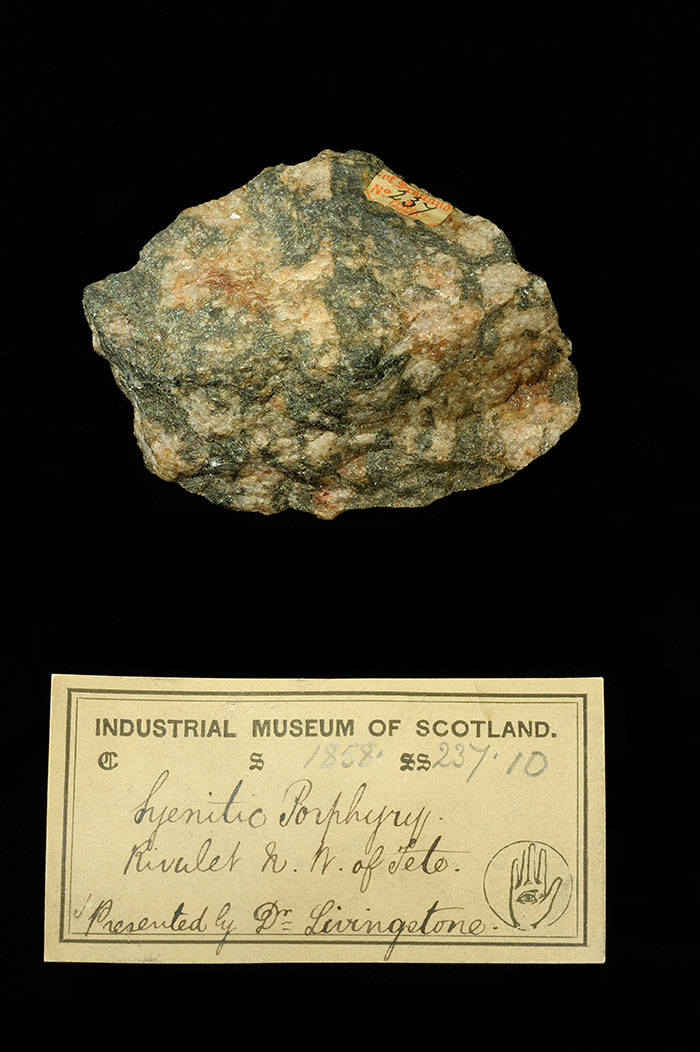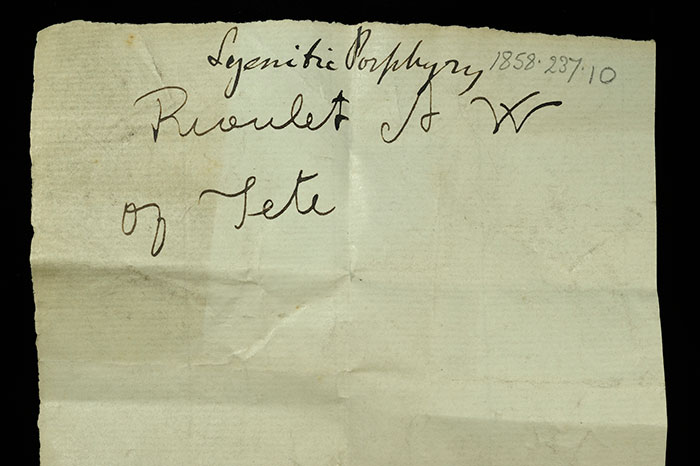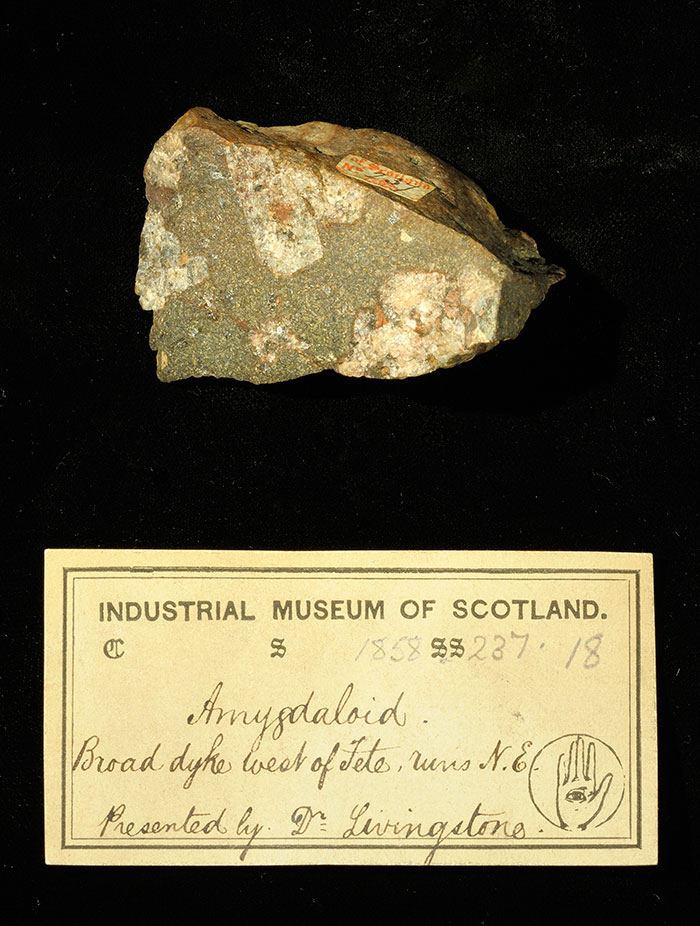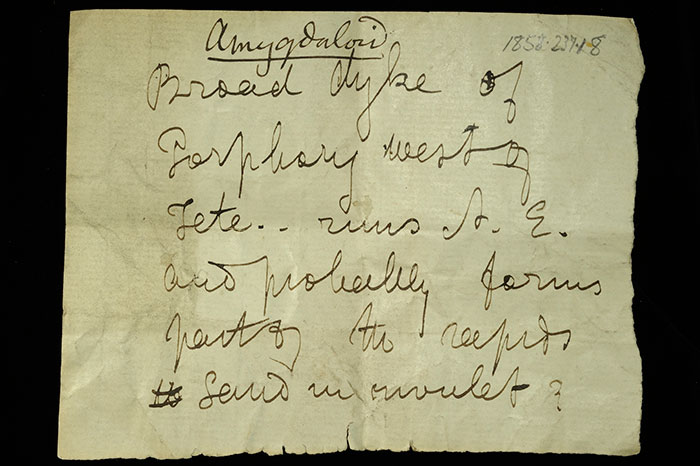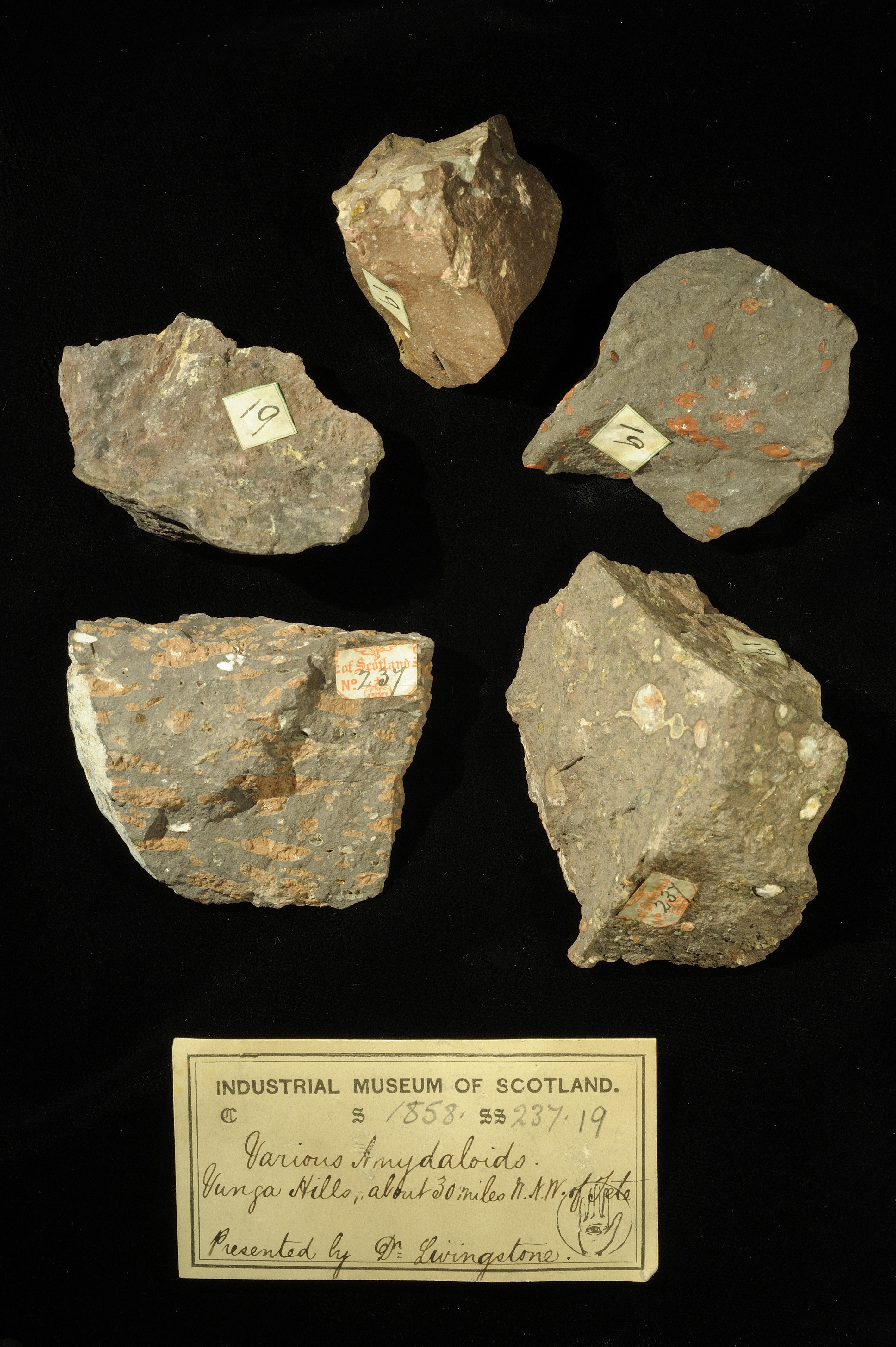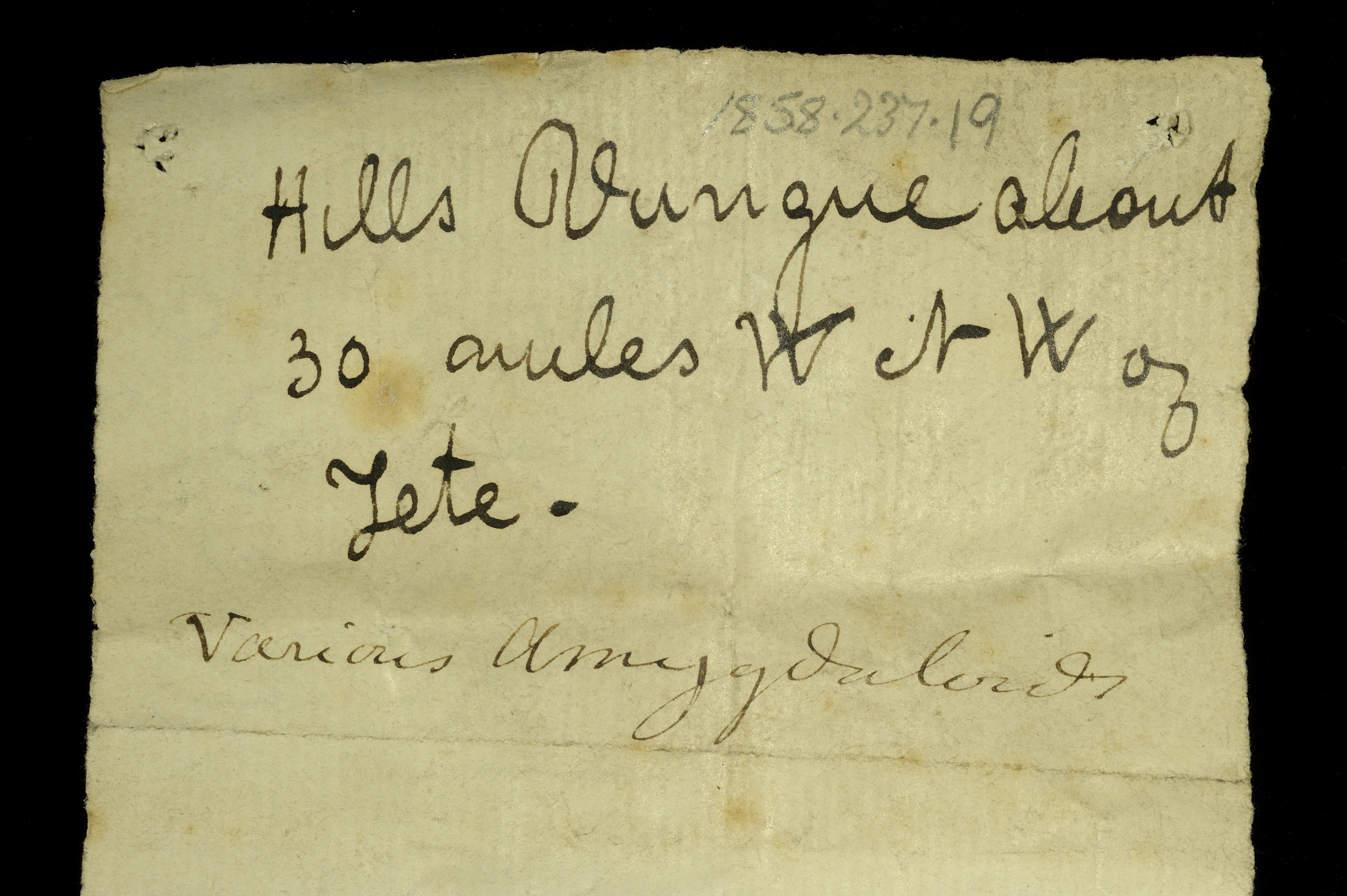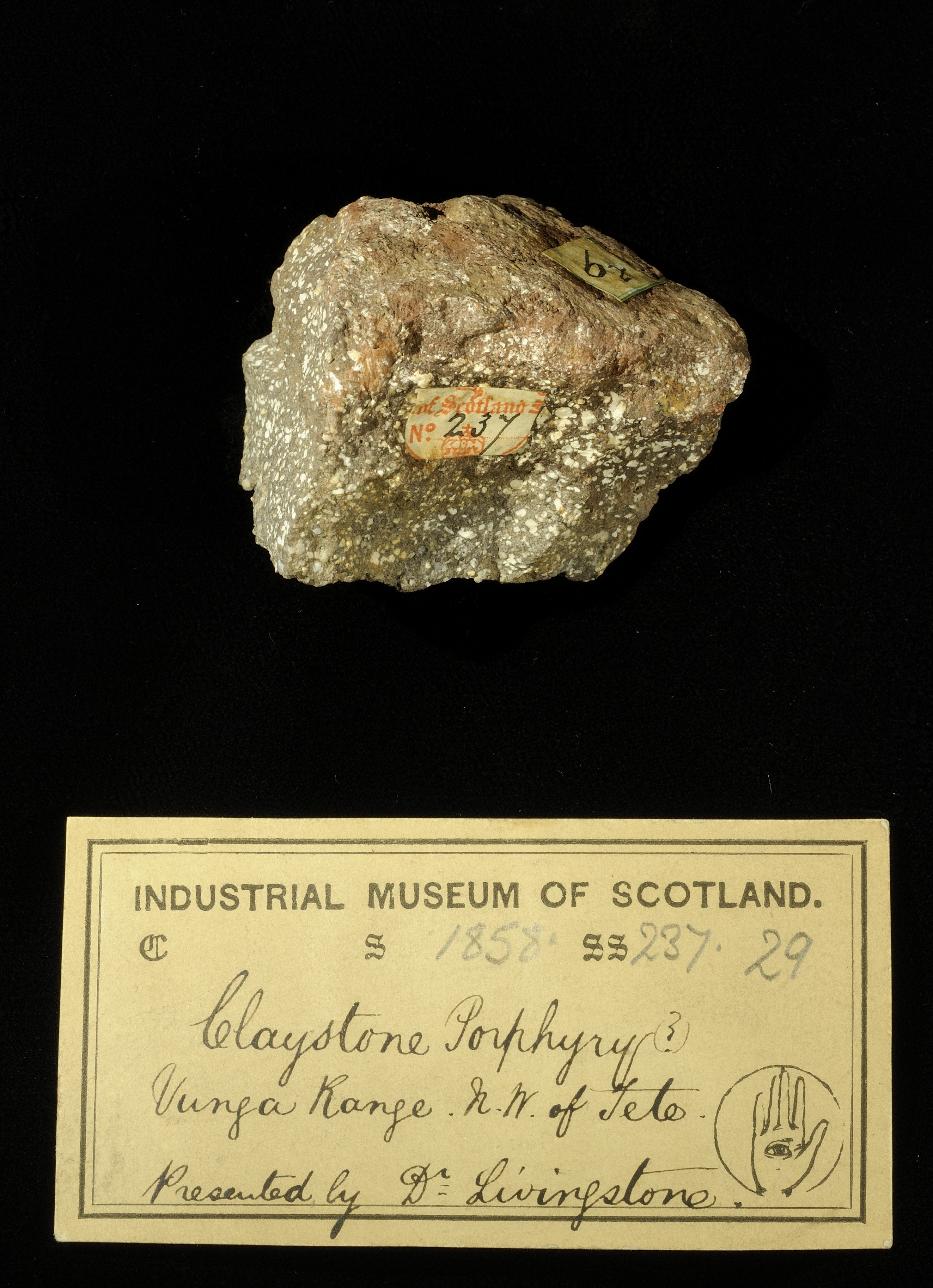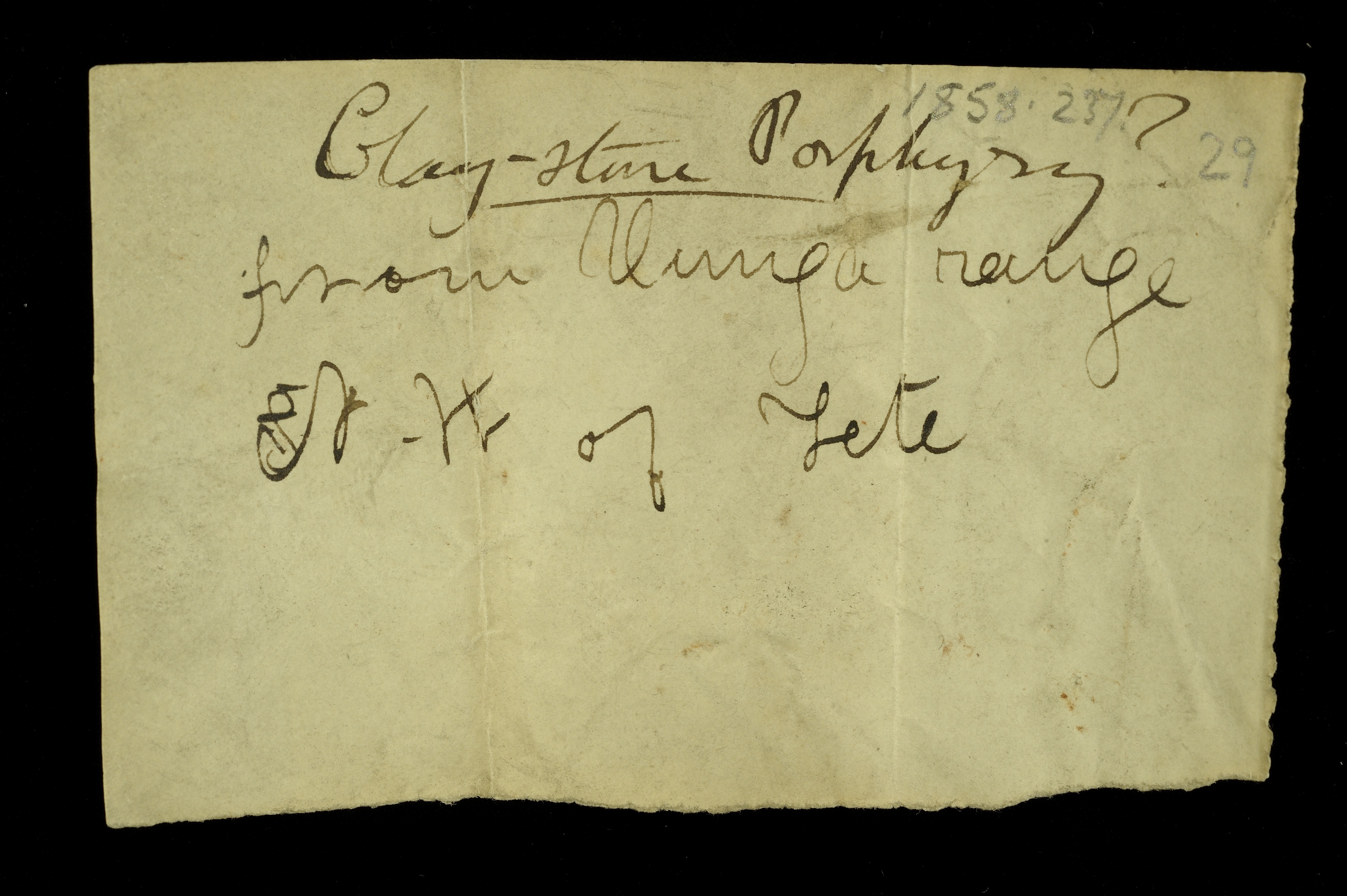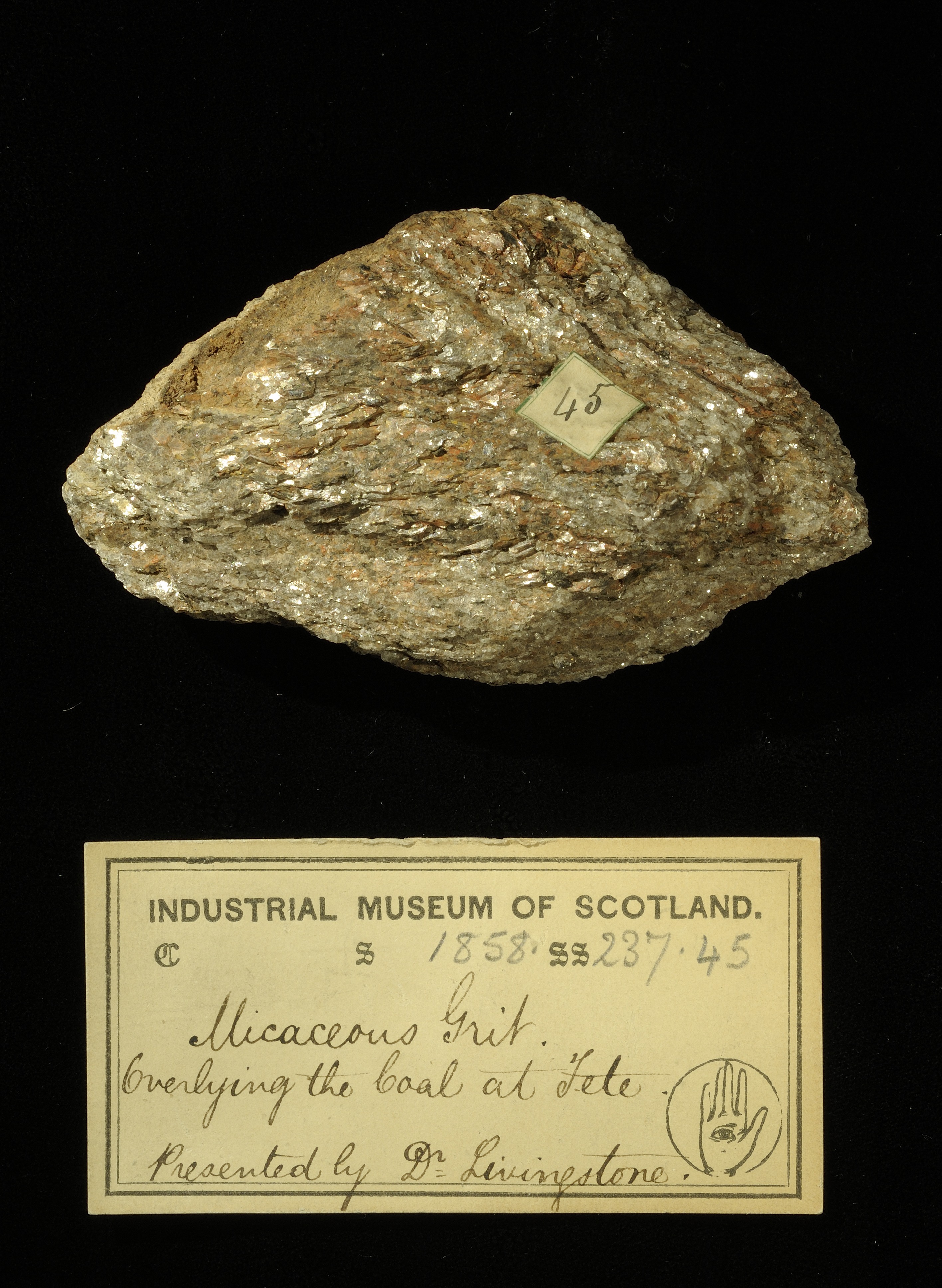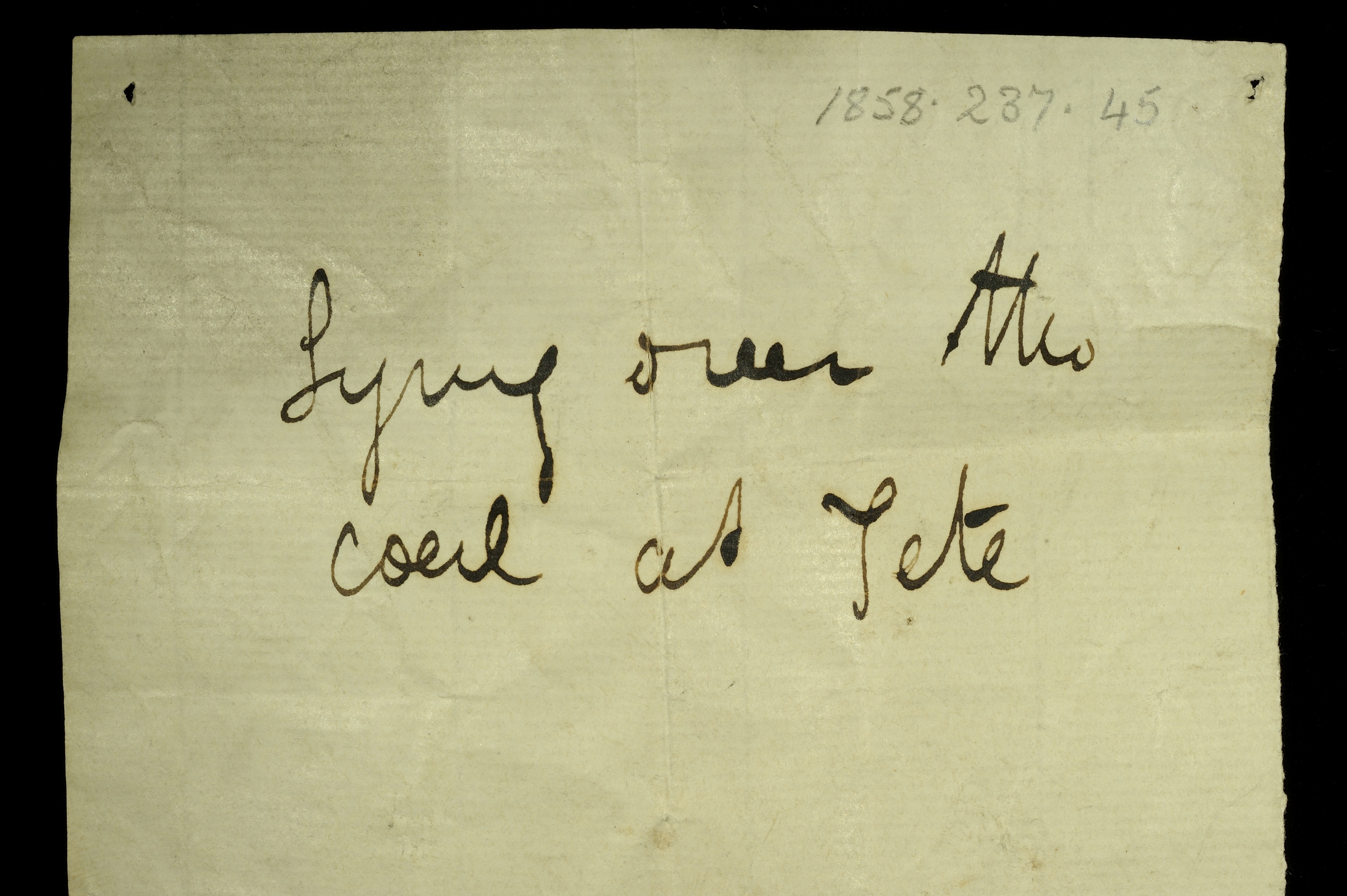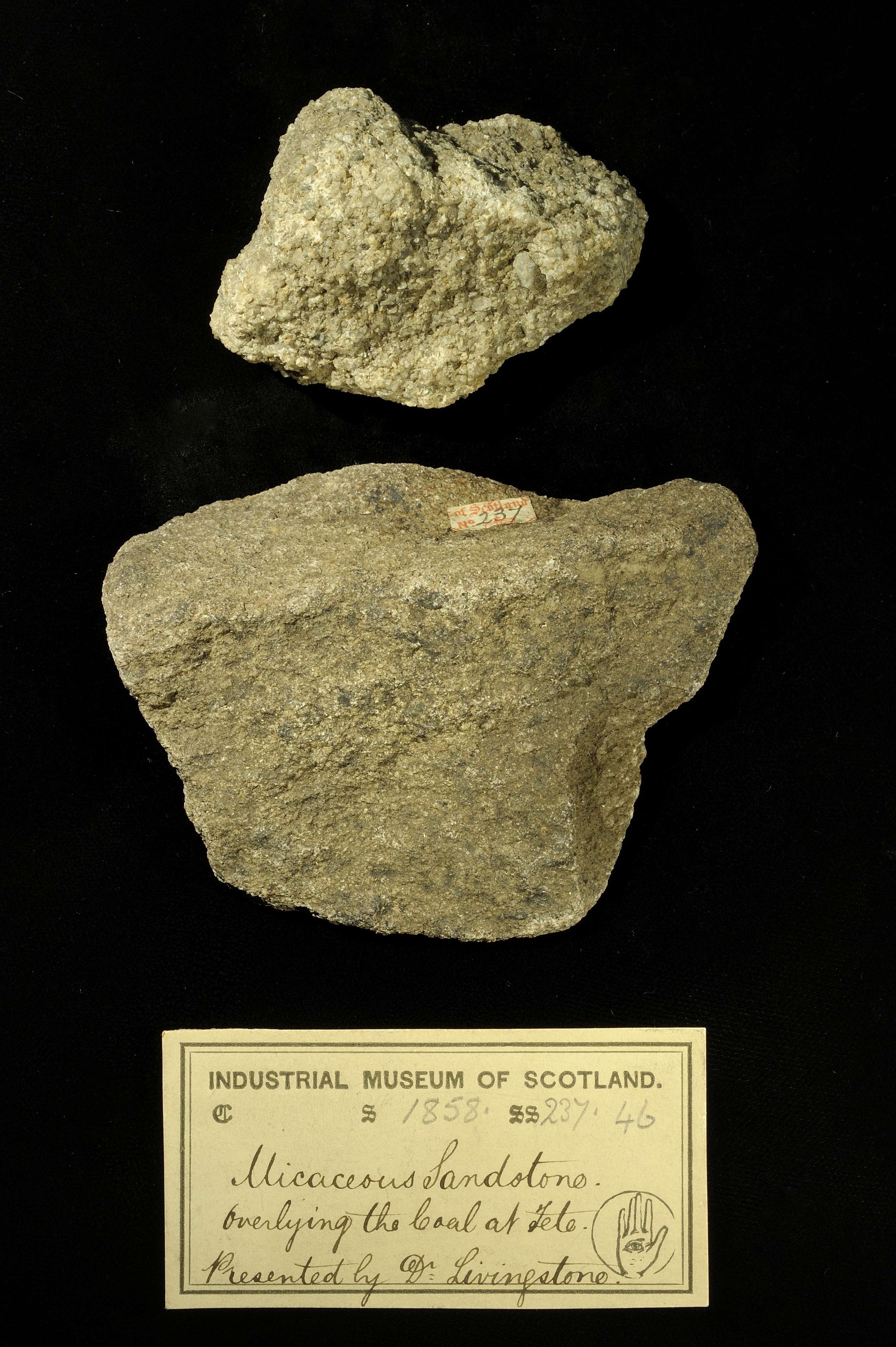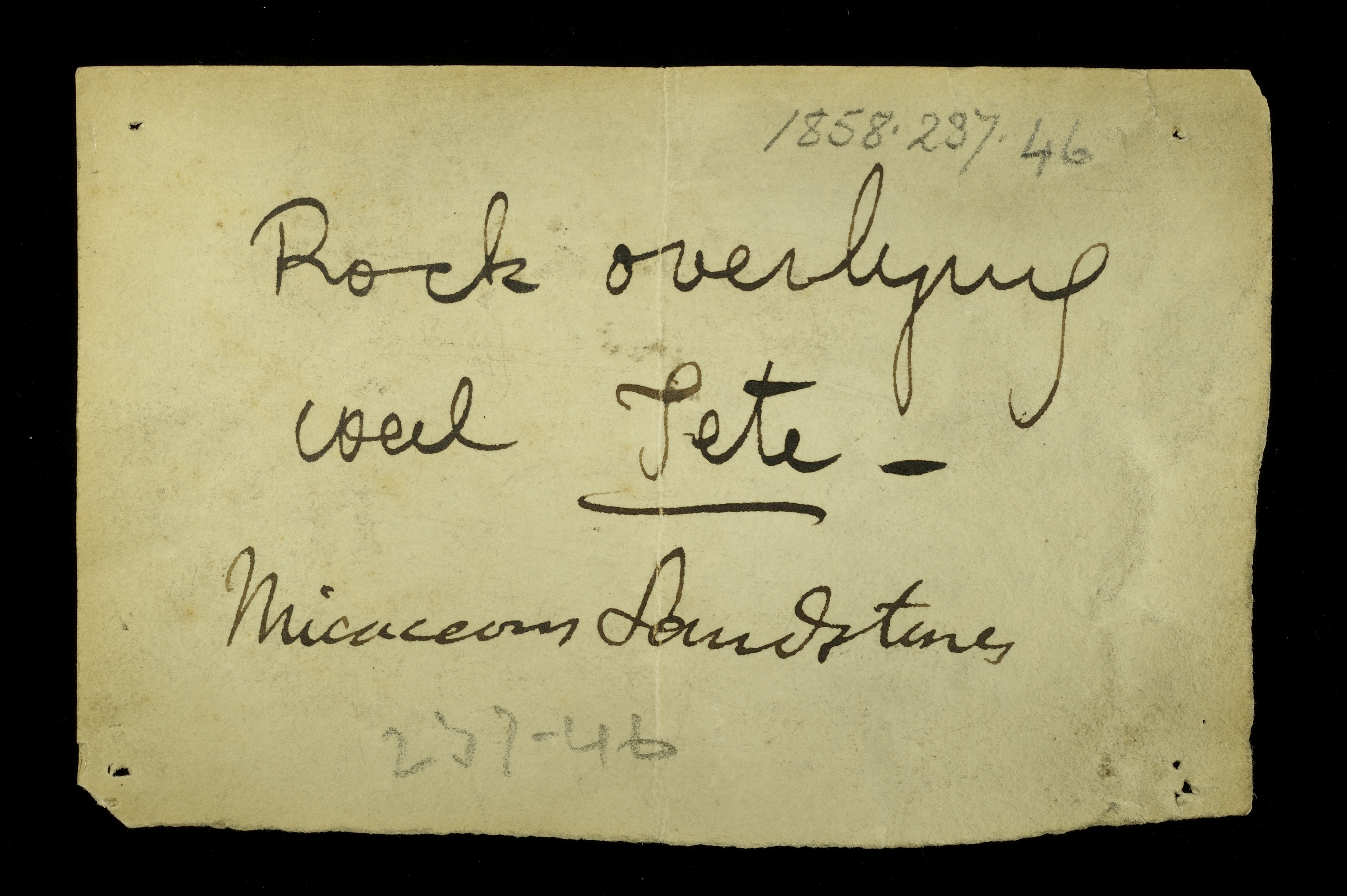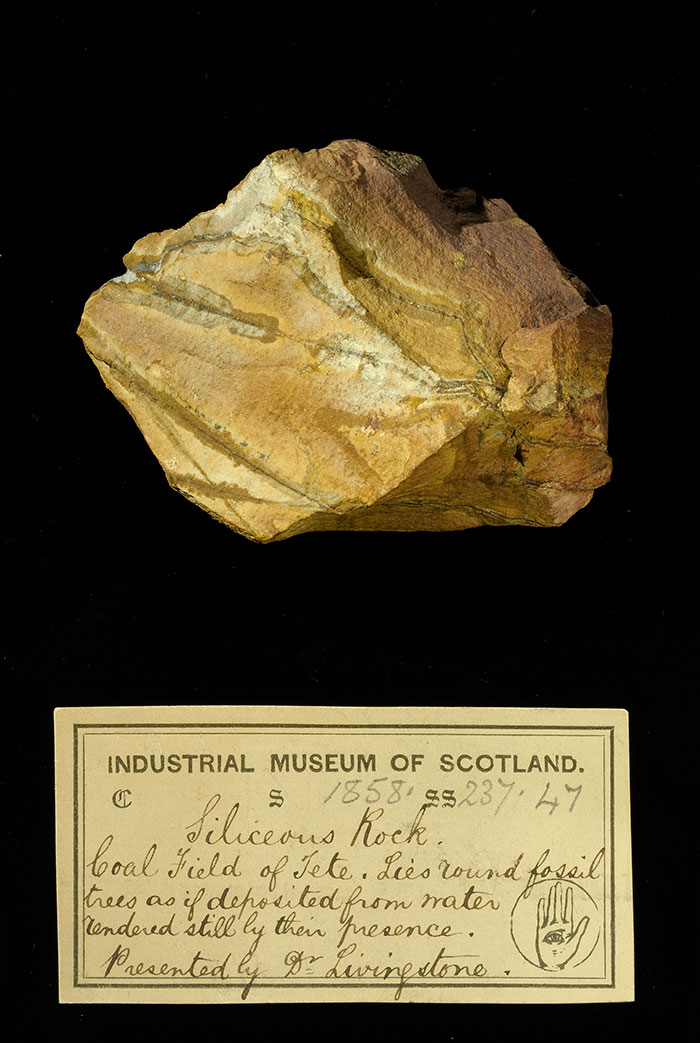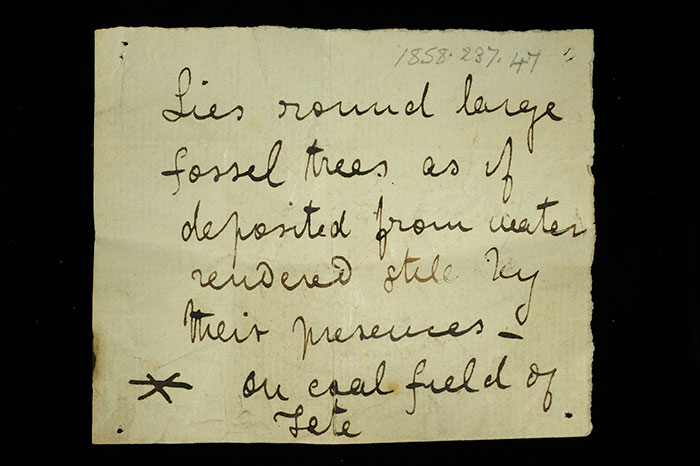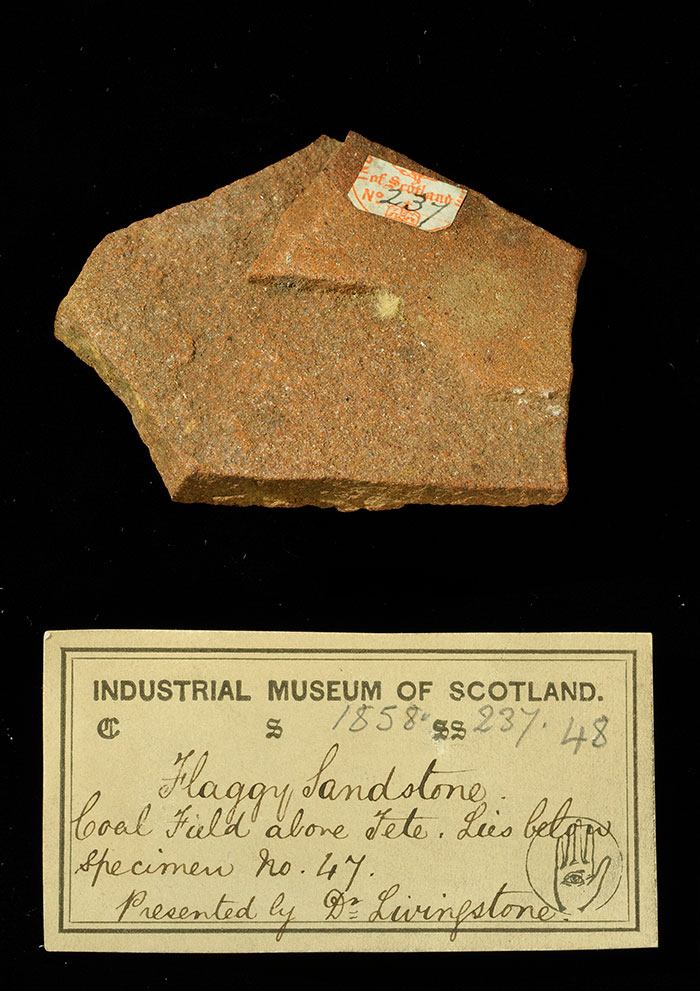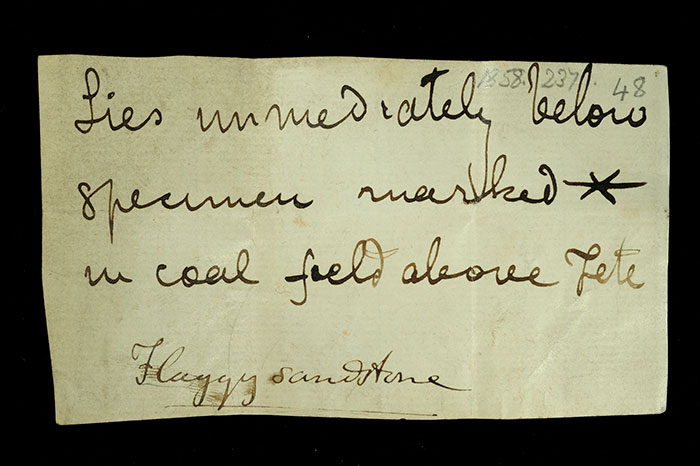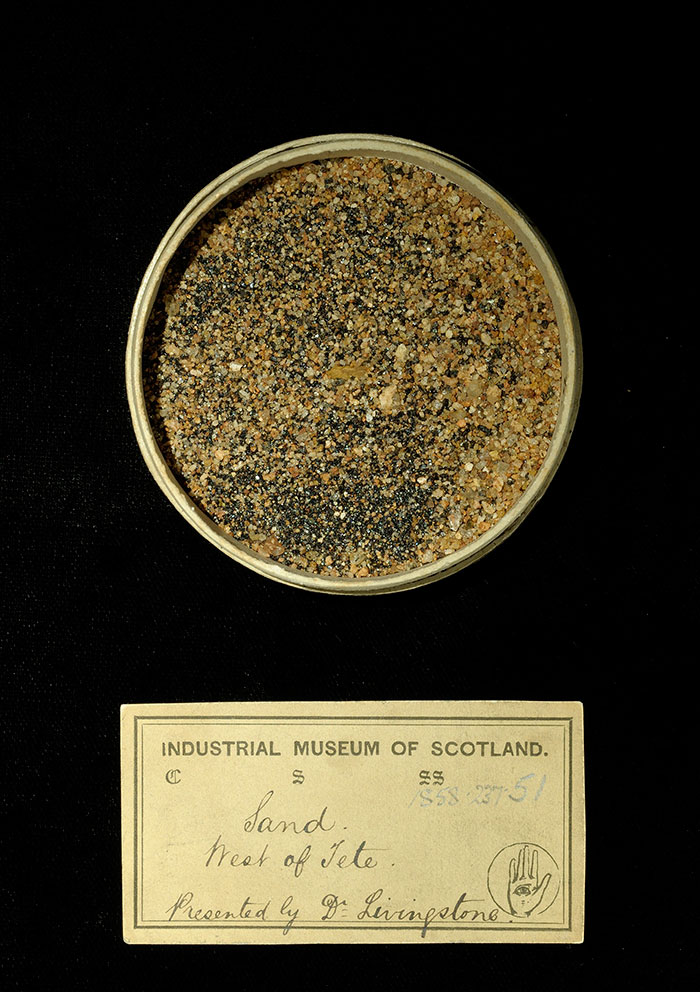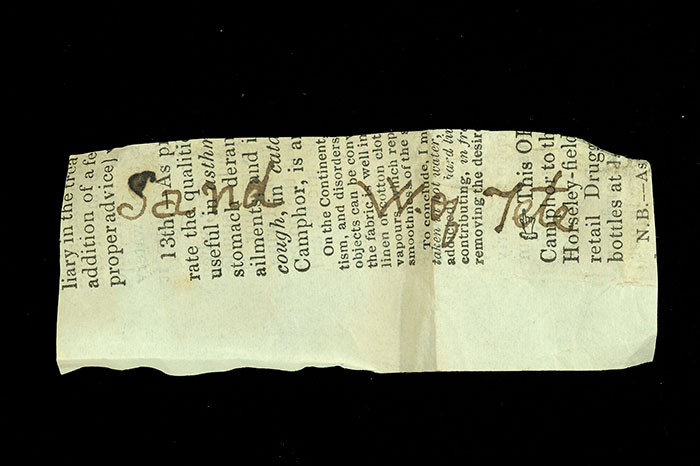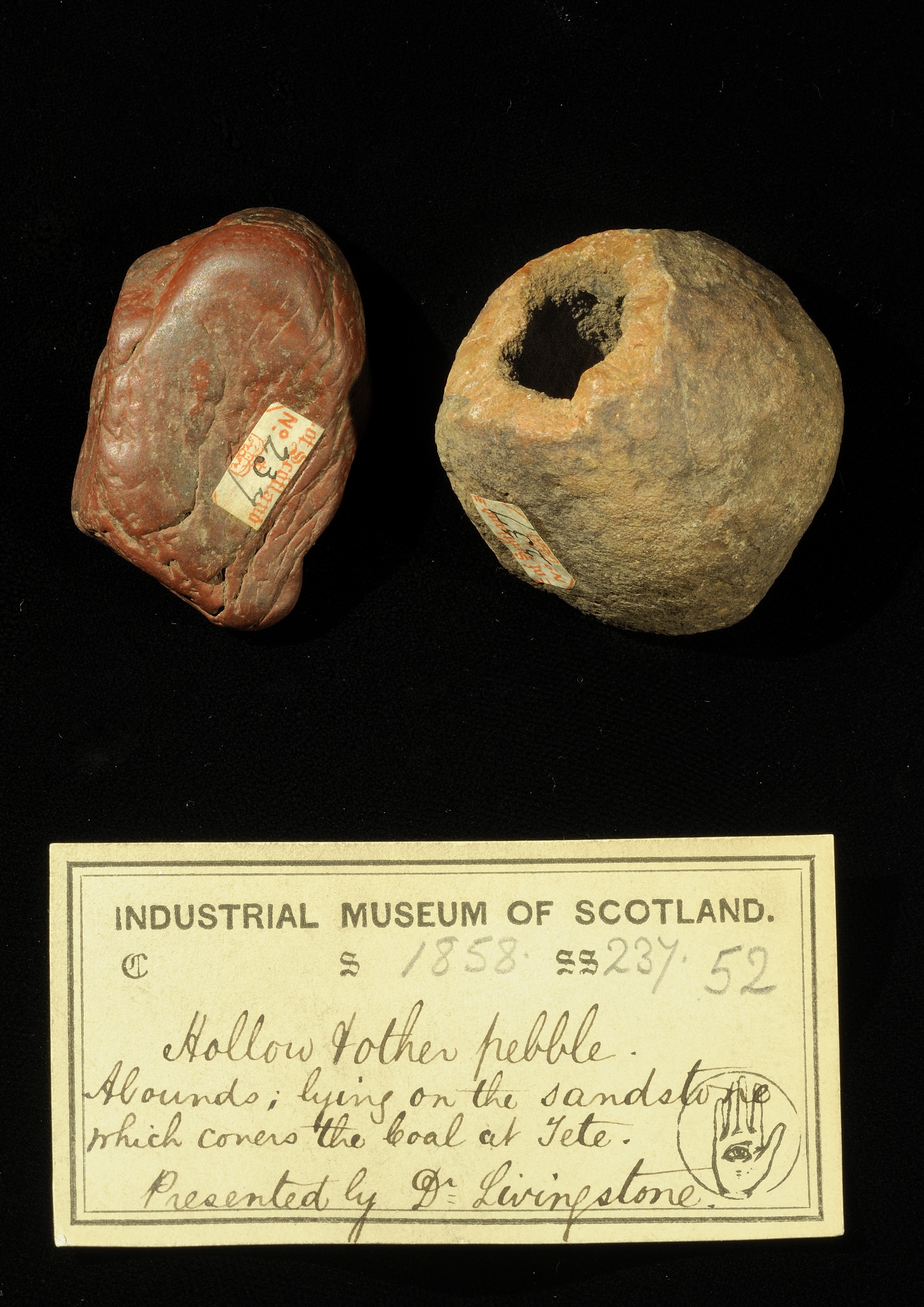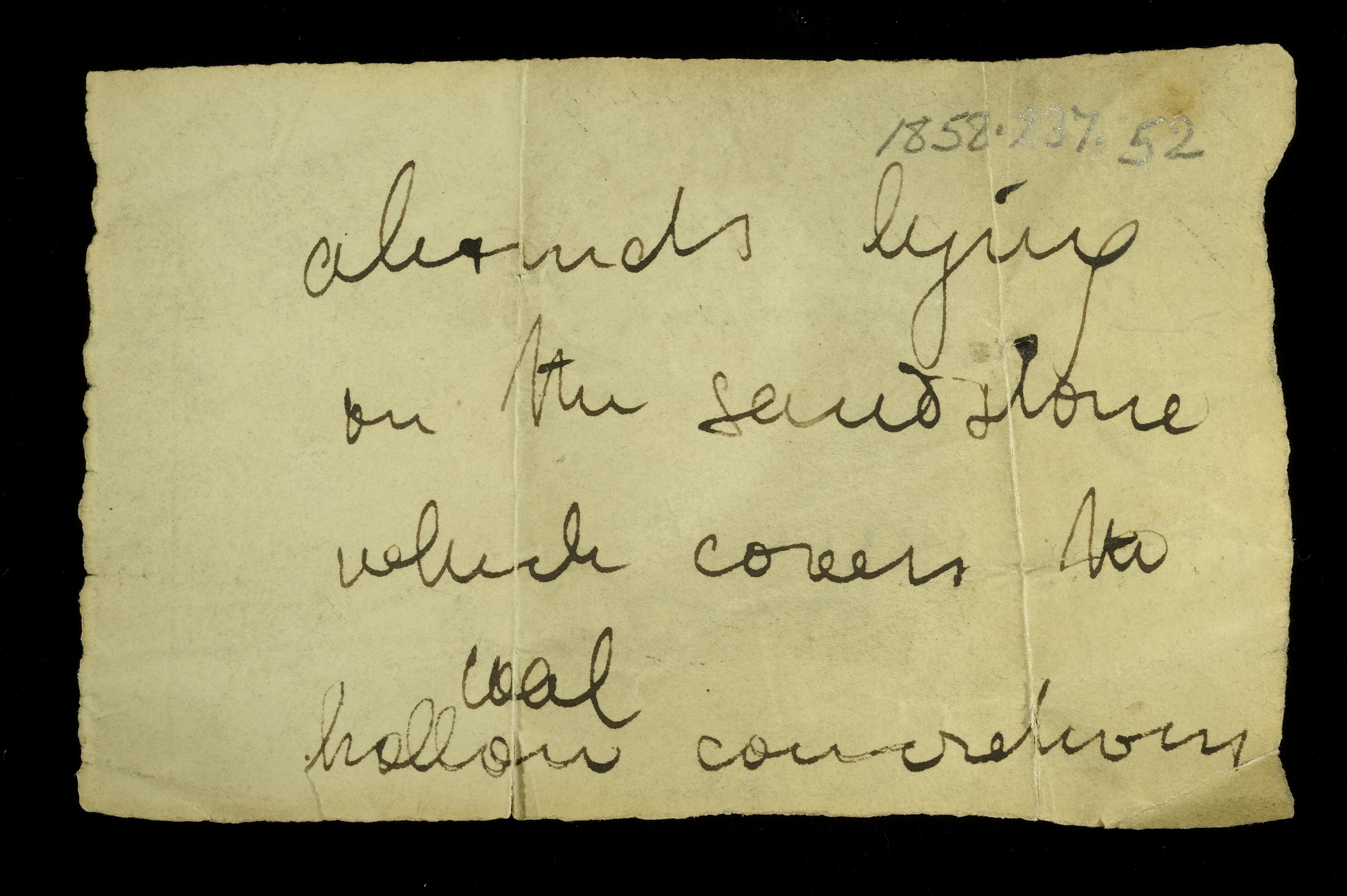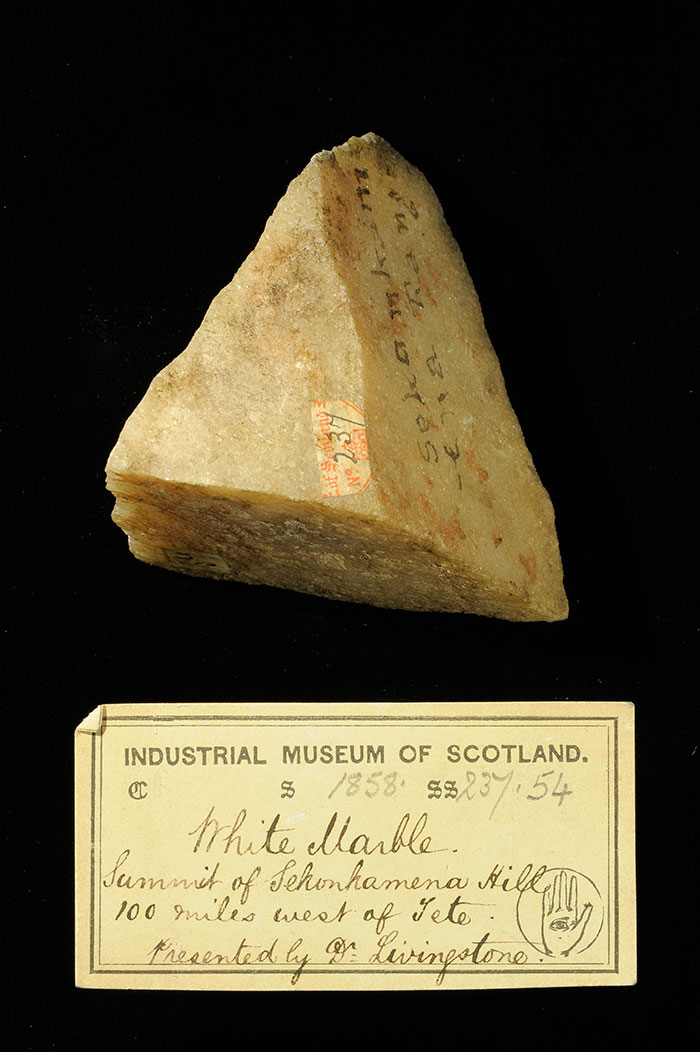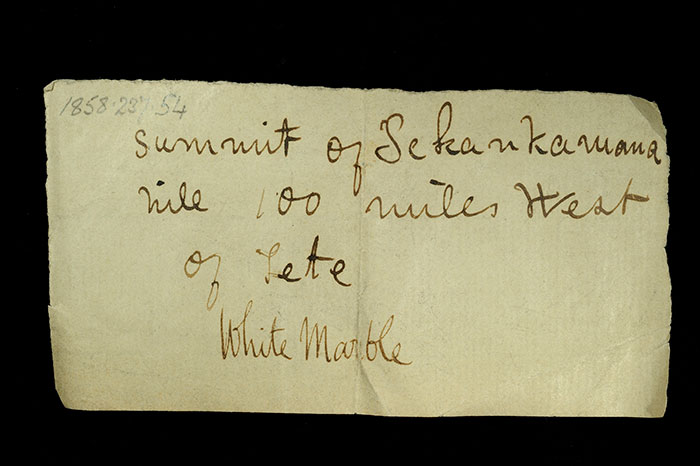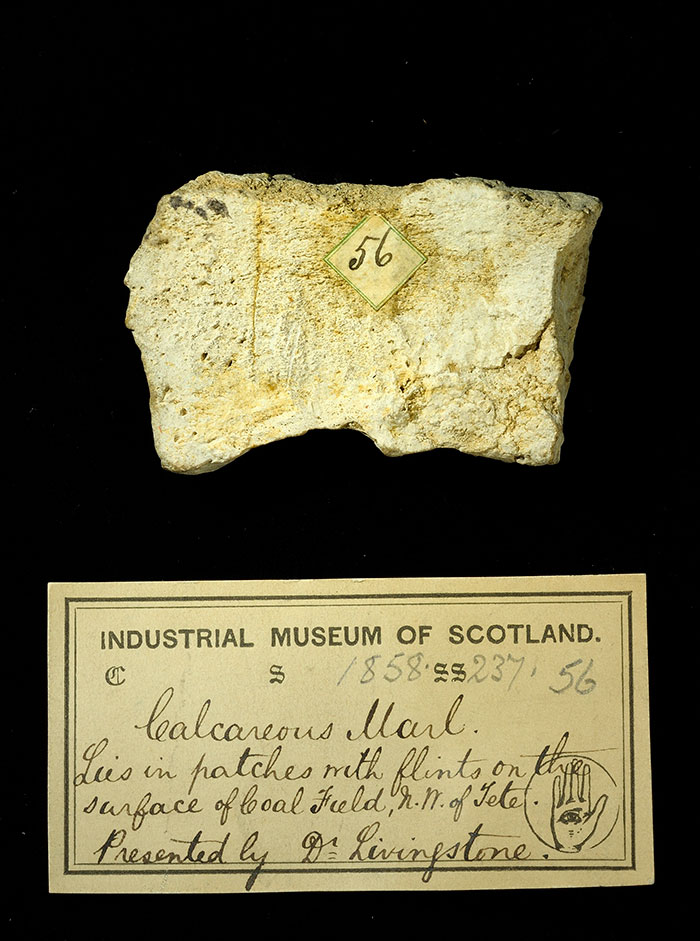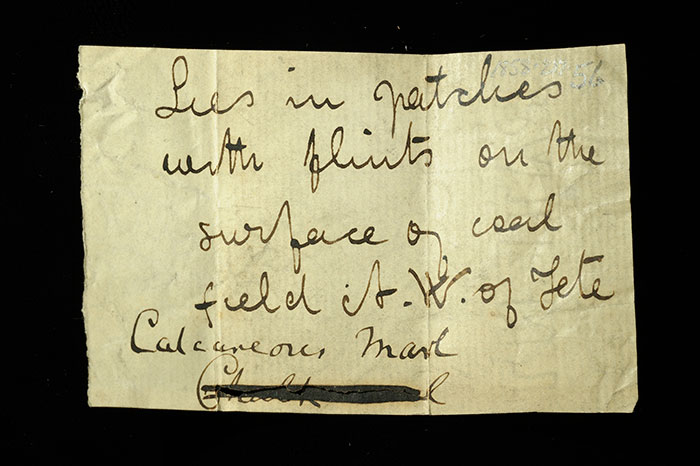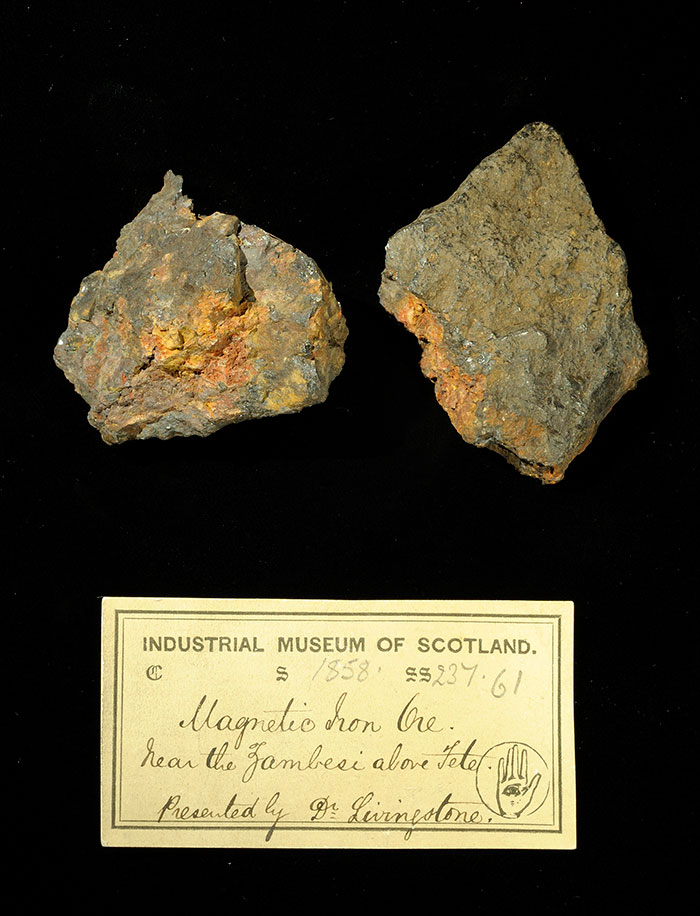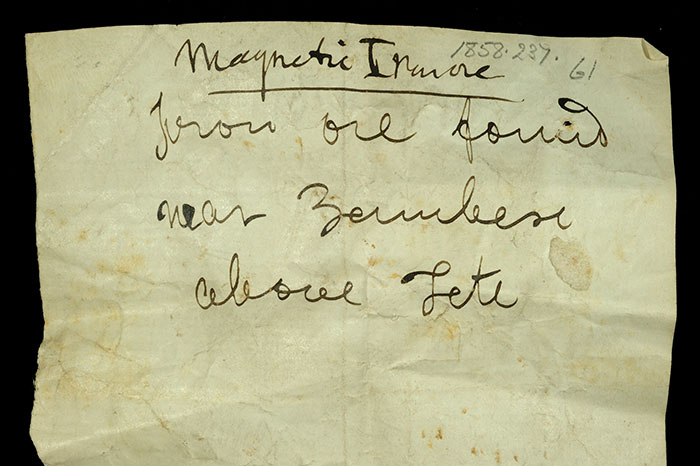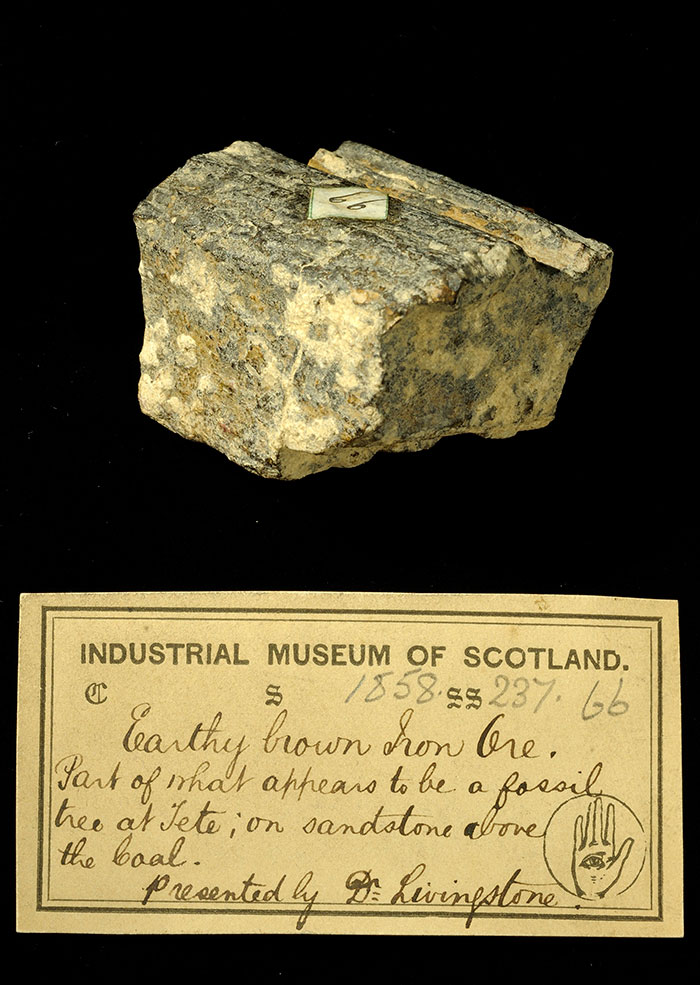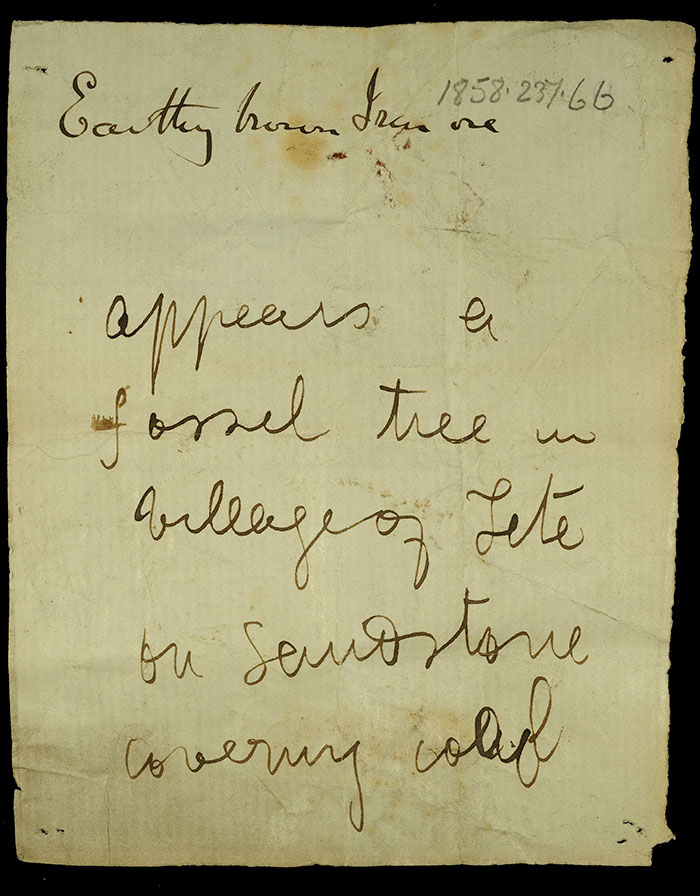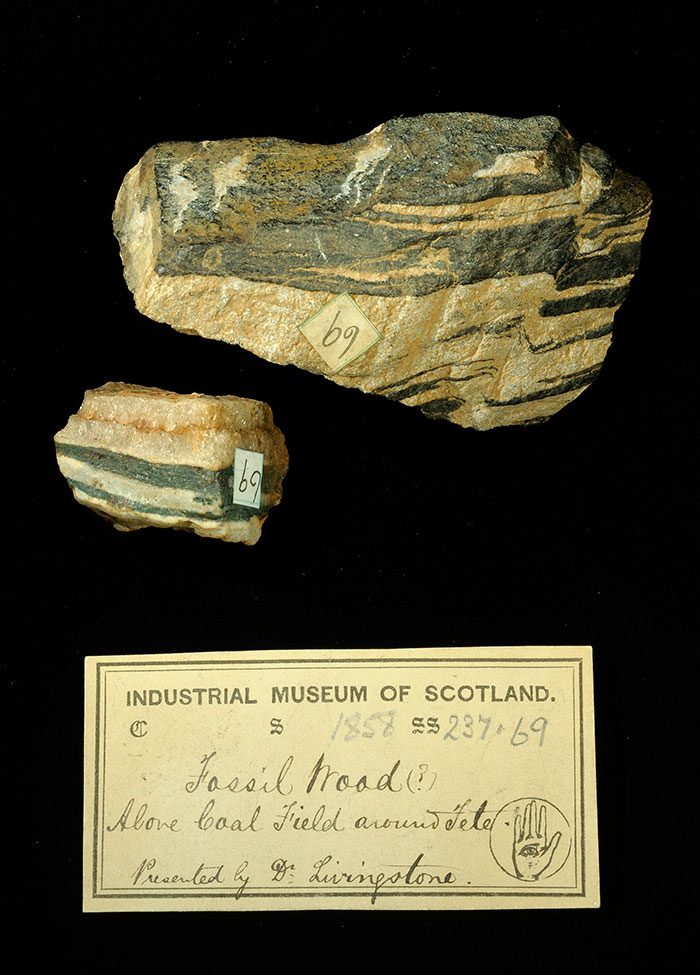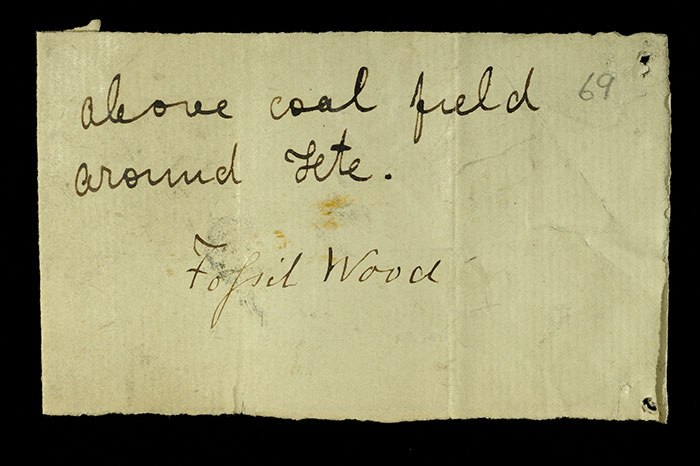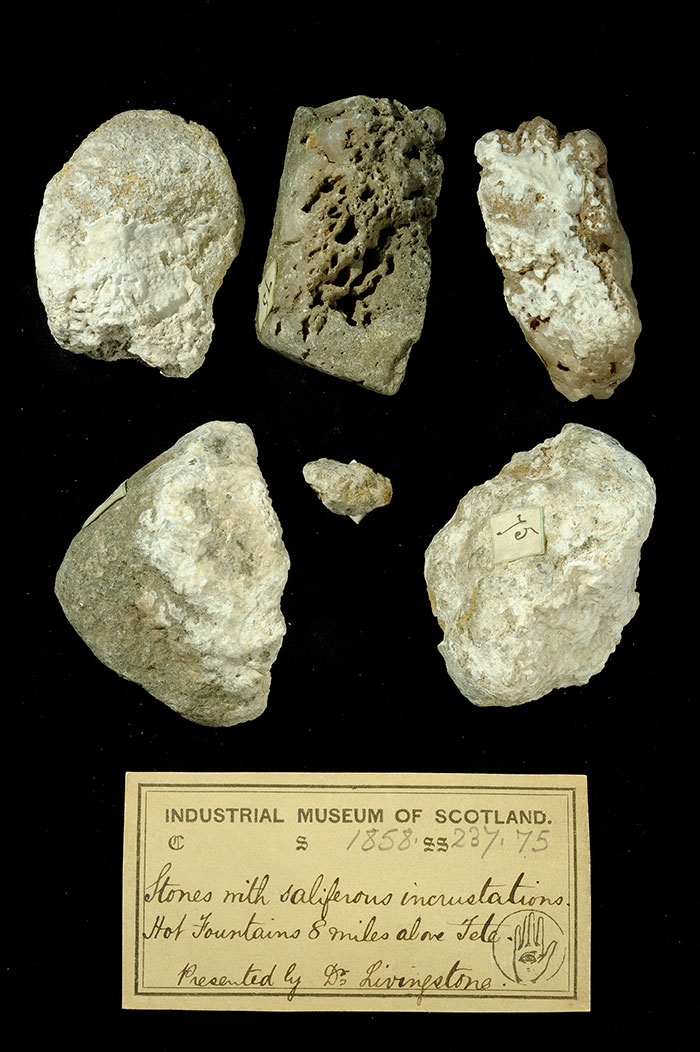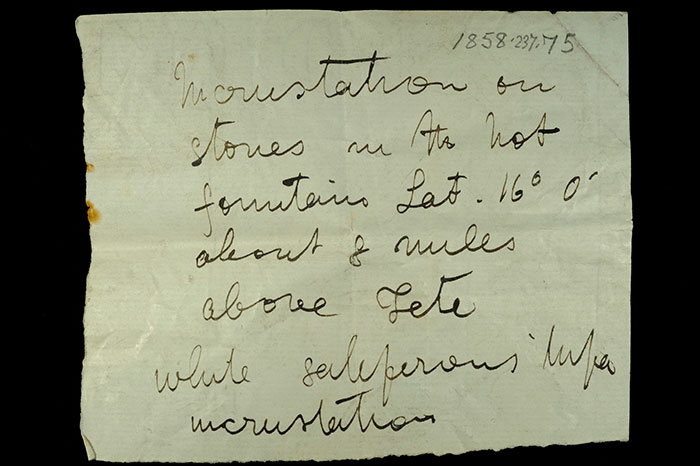Key in a search term below to search our website.
Key in a search term below to search our website.
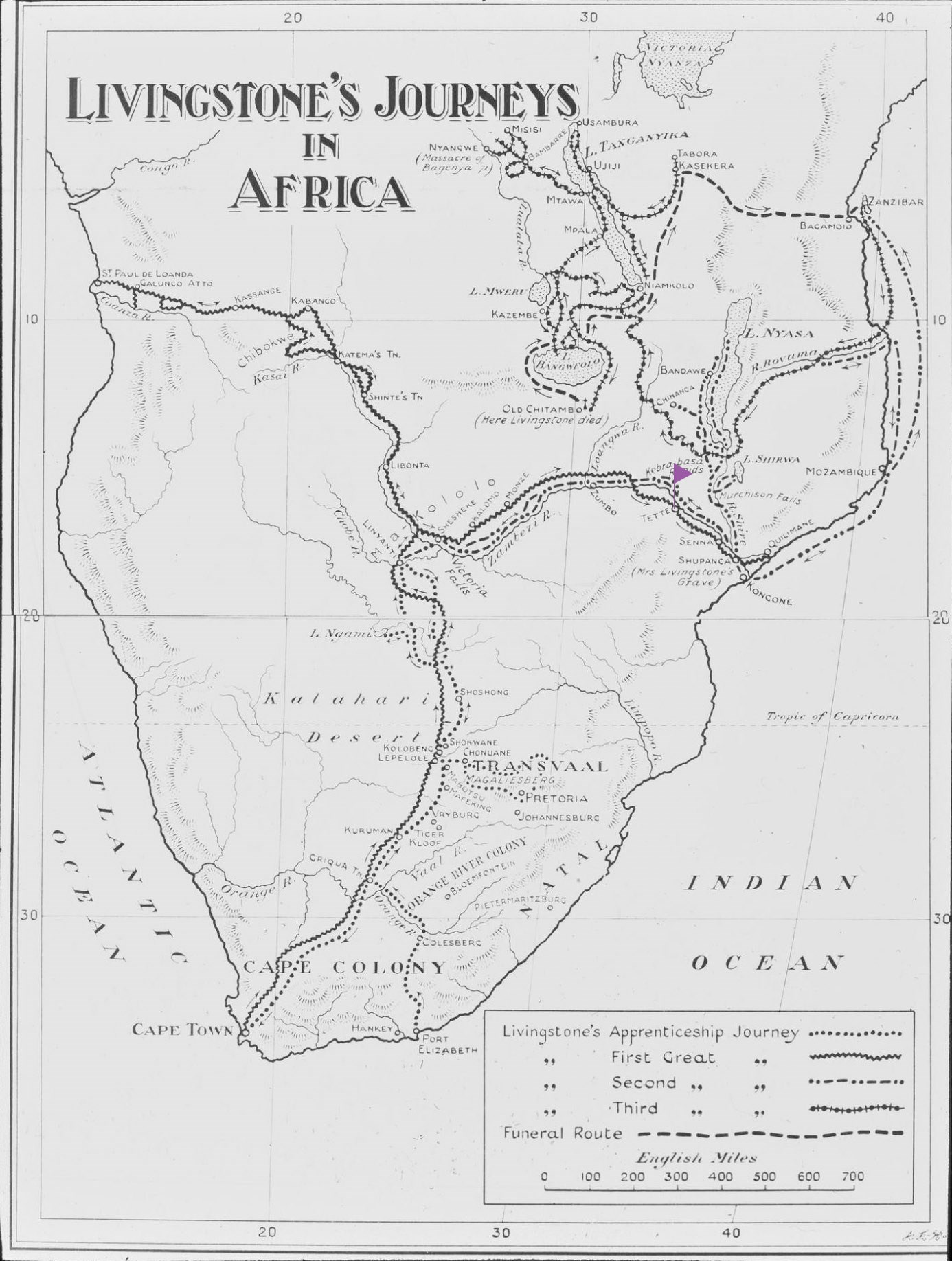
Natural World
Three hundred miles from the mouth of the Zambezi, Tete was a fortified trading post established by the Portuguese. Goods were brought upriver from the coastal port of Quilimane to large storage depots, where they were collected for onward transport.
"The village of Tete is build on a long slope down to the river, with the fort on the water's edge. [...] The whole of the adjacent country is rocky and broken, but every available spot is under cultivation."
Travels and Research in South Africa, John Murray, London, 1912, p. 425. (First edition 1857)
Livingstone collected 16 specimens from the Tete area. Most were related to the coal fields and iron ore deposits. He also collected minerals from local hot springs.
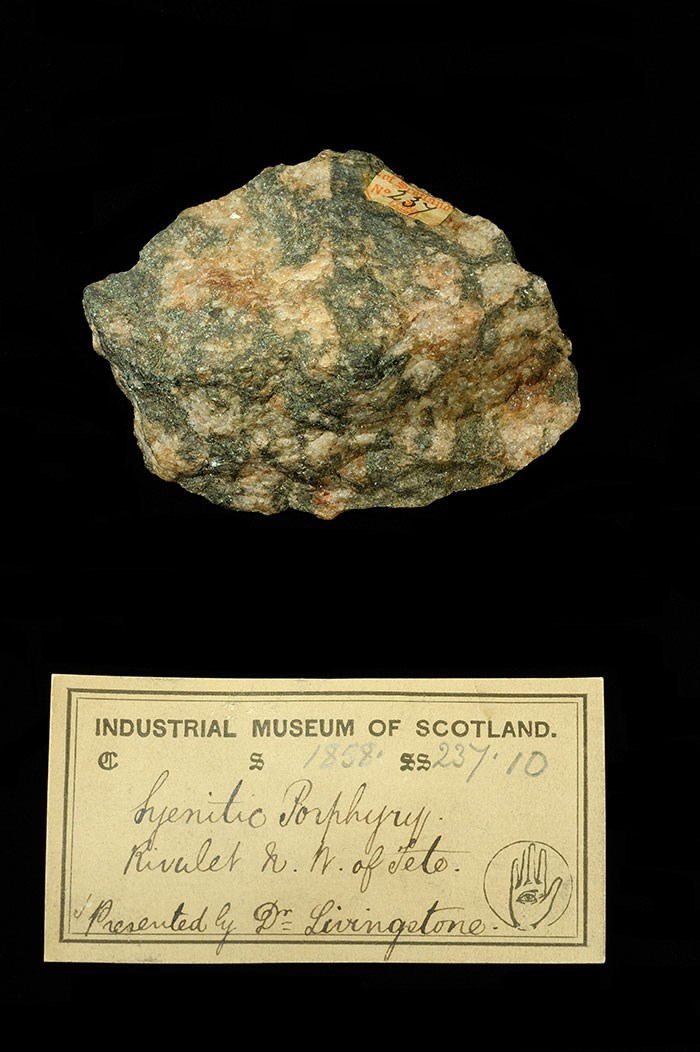
Specimen of syenitic porphyry with 19th century museum label: ‘Syenitic porphyry. Rivulet NW of Tete. Presented by Dr Livingstone.’
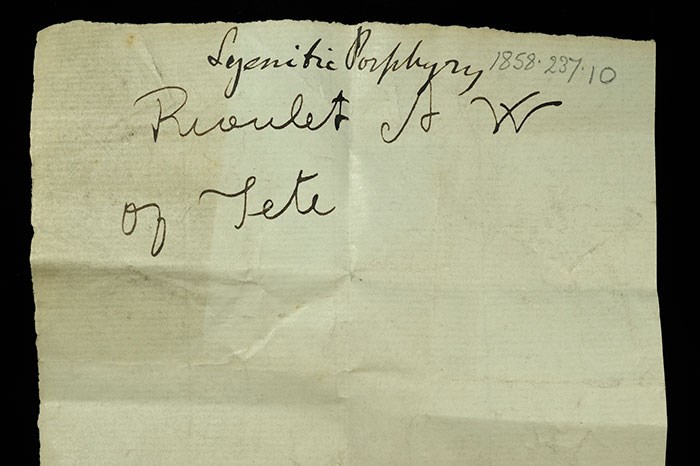
Livingstone’s note written in the field for the syenitic porphyry: ‘Rivulet NW of Tete.’
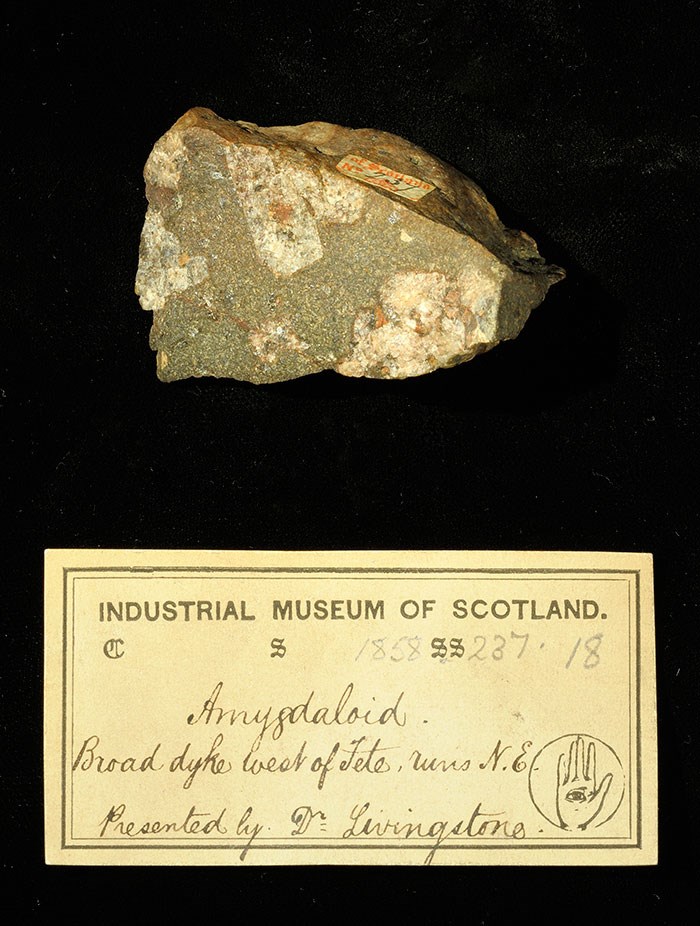
Specimen of amygdale with 19th century museum label: ‘Amygdaloid. Broad dyke west of Tete, runs NE. Presented by Dr Livingstone.’
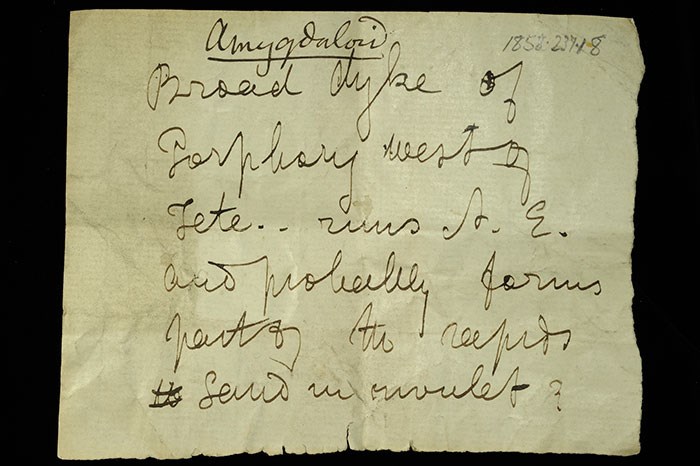
Livingstone’s note written in the field for the amygdale: ‘Broad dyke of porphyry west of Tete. Runs NE and probably forms parts of the rapids, sand not in rivulet.’
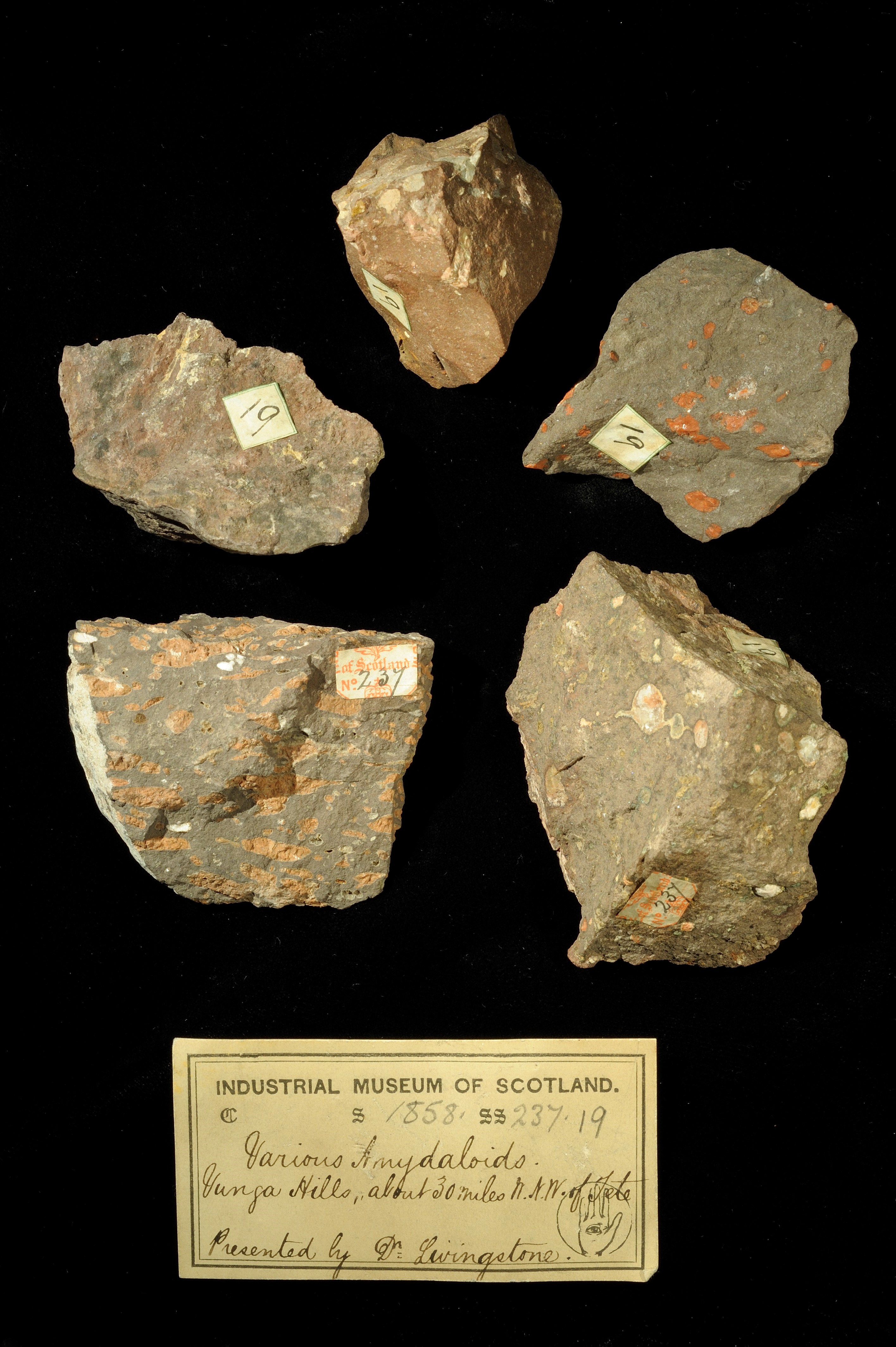
Specimens of amygdales with 19th century museum label: ‘Various amydaloids. Vunga hills, about 30 miles WNW of Tete. Presented by Dr Livingstone.’
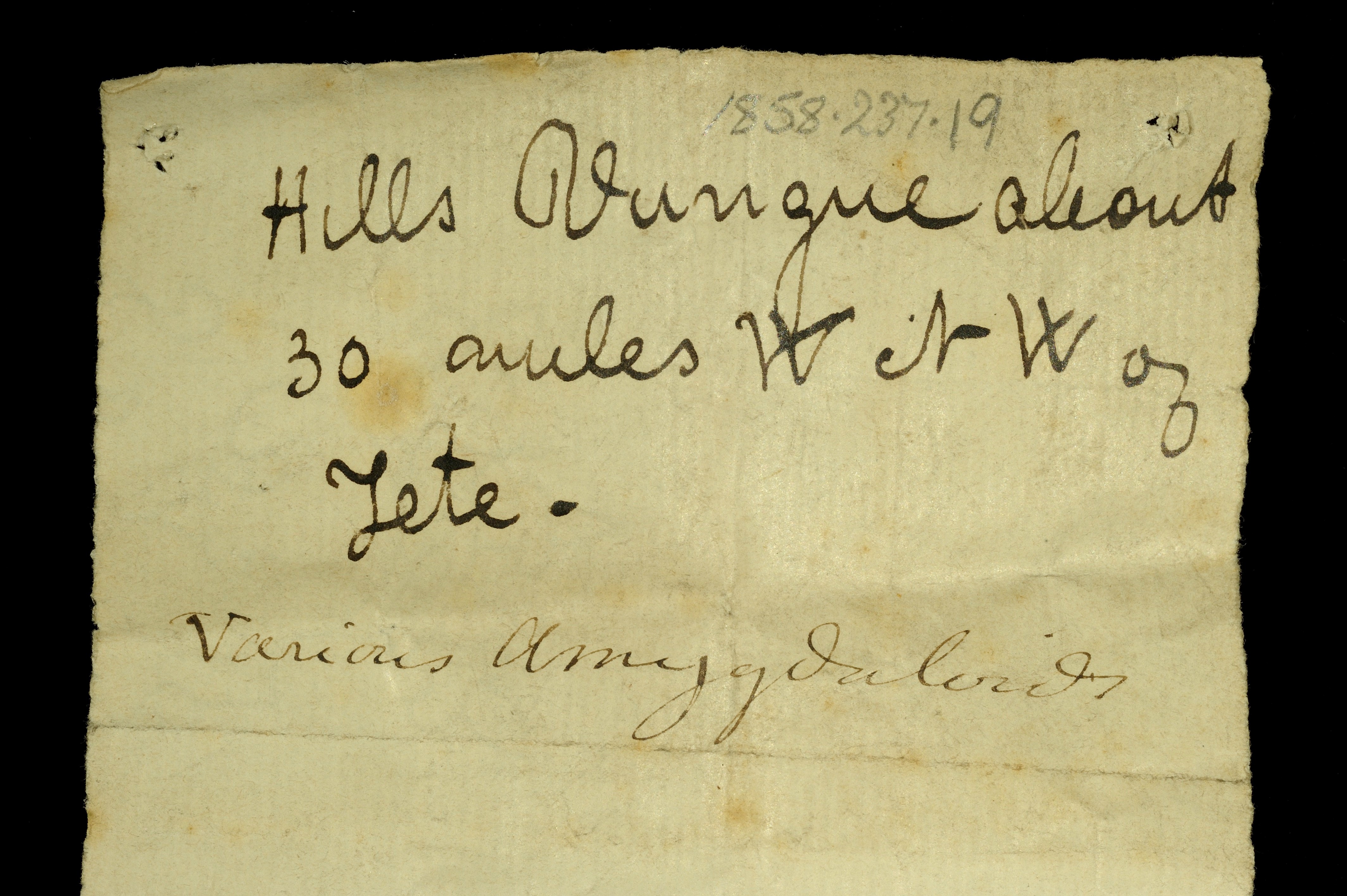
Livingstone’s note written in the field for the amygdales: ‘Hills Vunga about 30 miles WNW of Tete.’
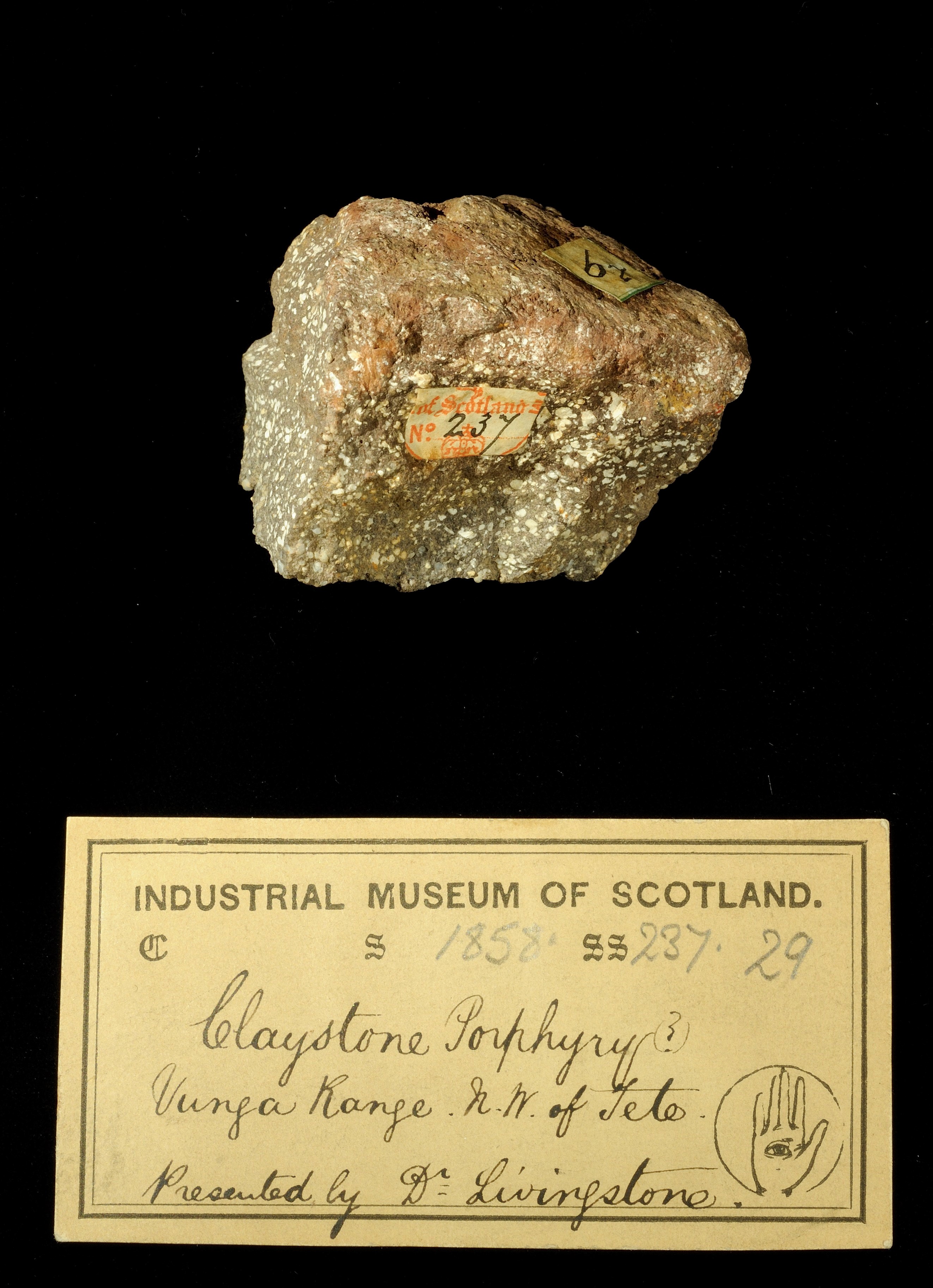
Specimen of clay-stone porphyry with 19th century museum label: ‘Claystone porphyry (?) Vunga Range. NW of Tete. Presented by Dr Livingstone.’
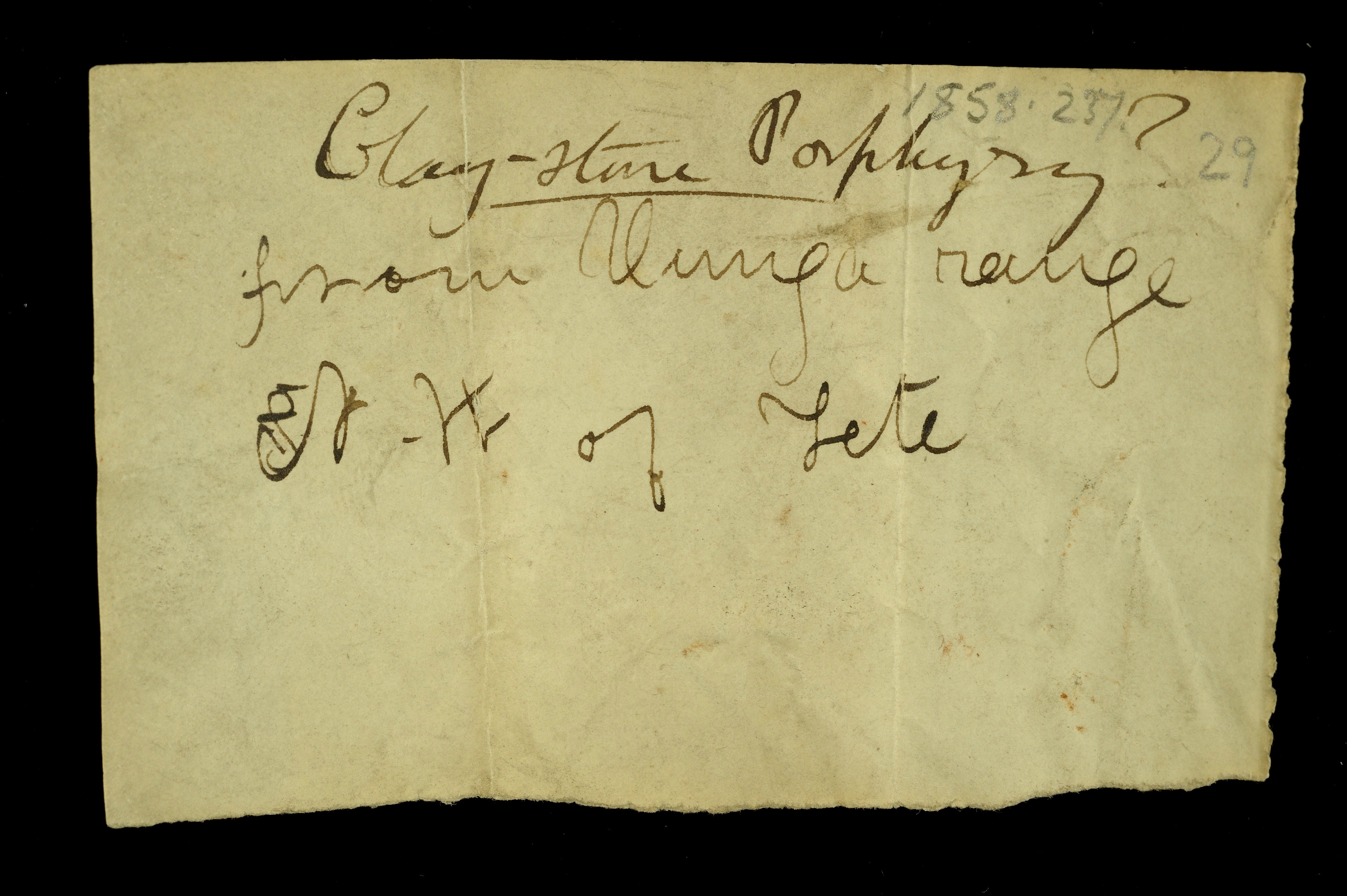
Livingstone’s note written in the field for the clay-stone porphyry: ‘From Vunga range NW of Tete.’
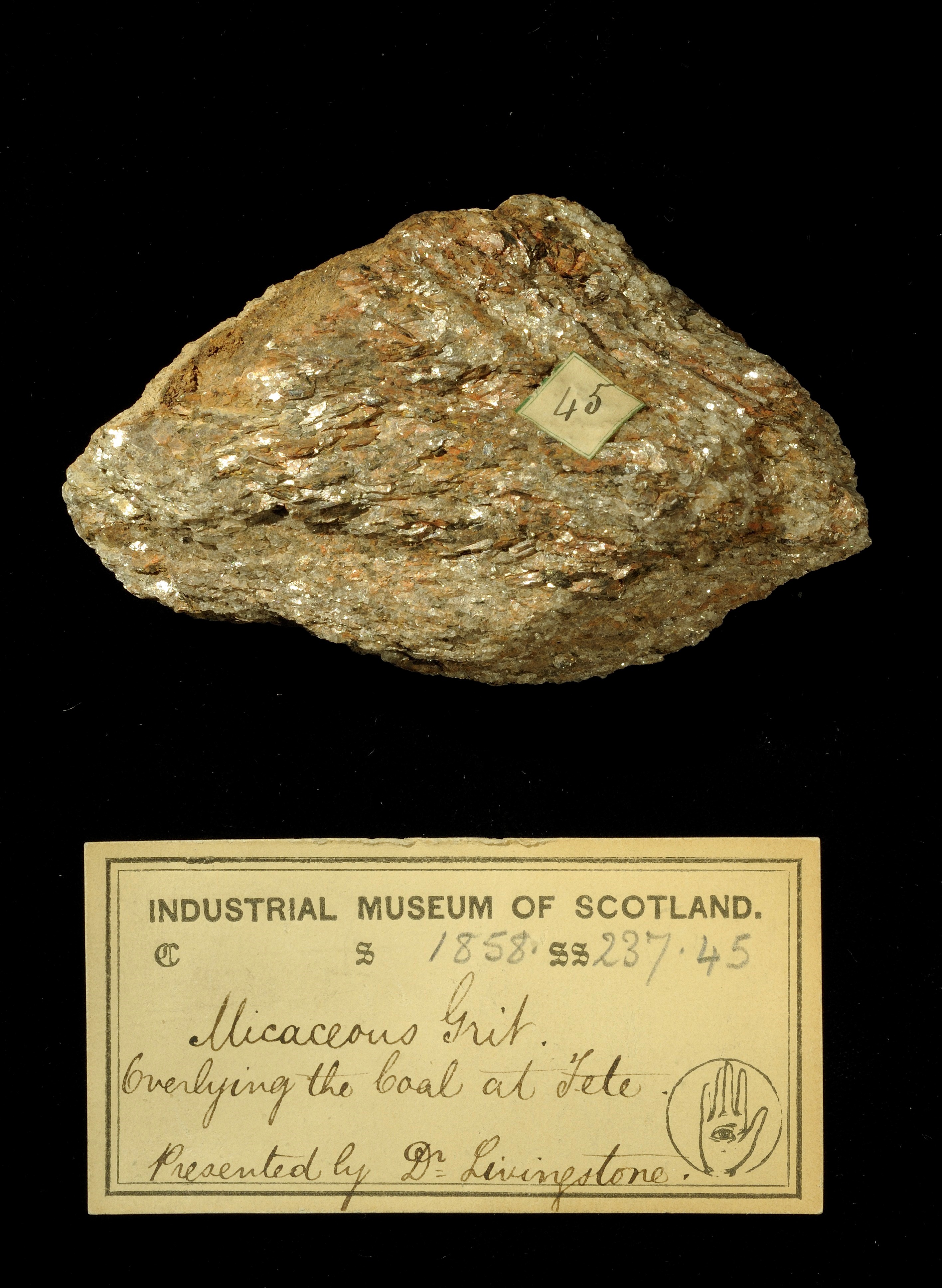
Specimen of micaceous grit with 19th century museum label: ‘Micaceous grit. Overlying the coal at Tete. Presented by Dr Livingstone.’
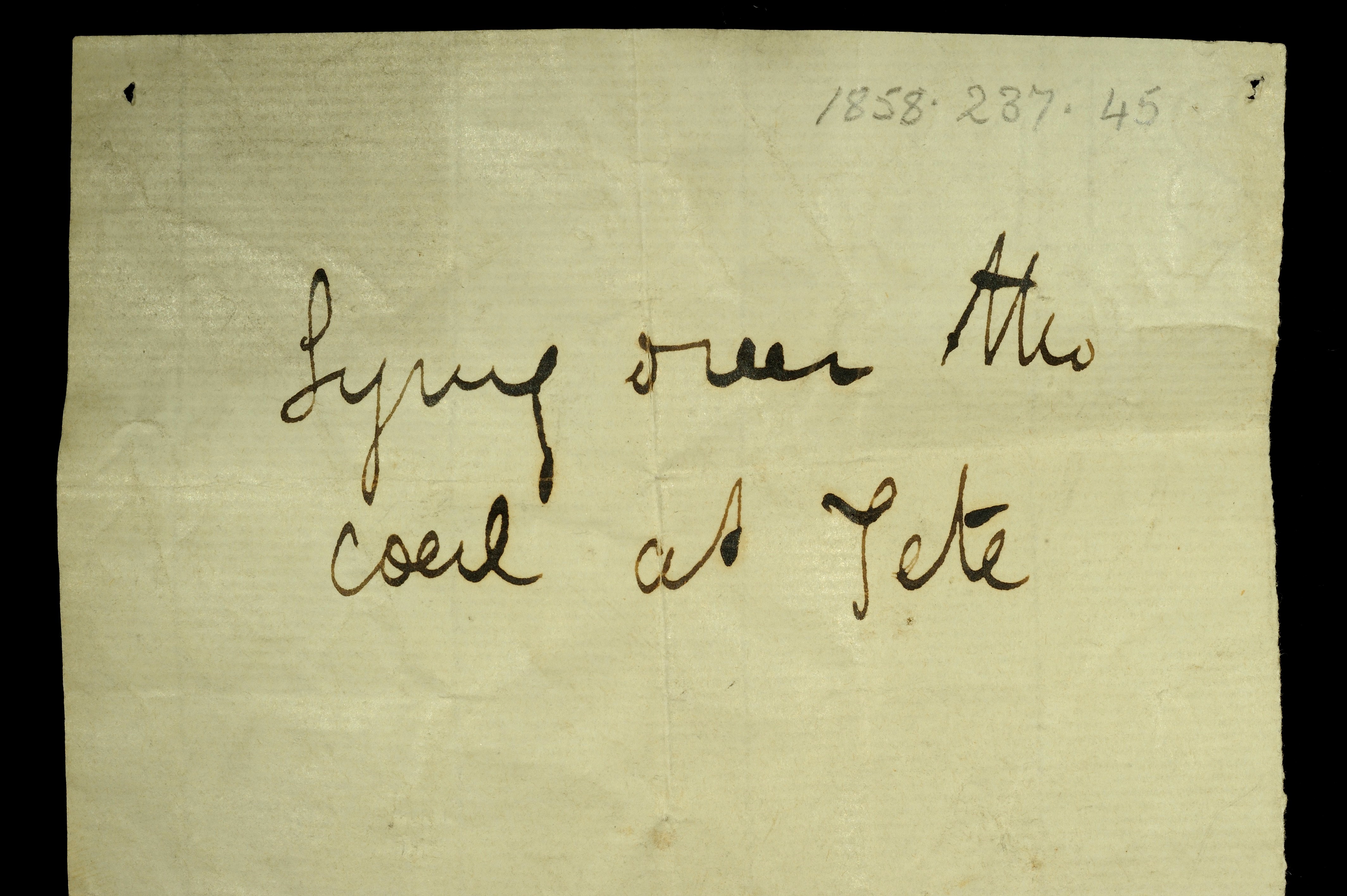
Livingstone’s note written in the field for the micaceous grit: ‘Lying over the coal at Tete.’
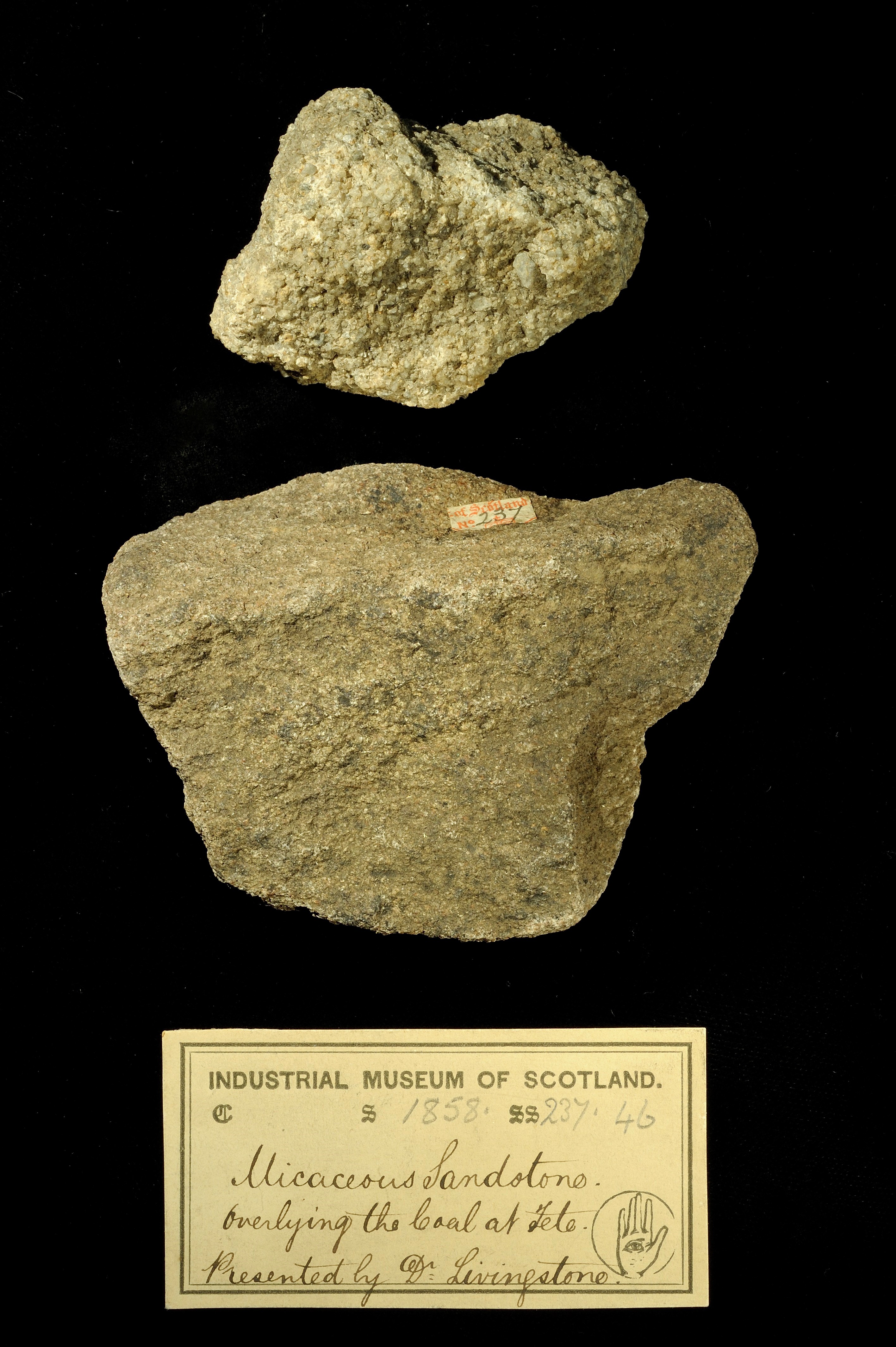
Specimen of micaceous sandstone with 19th century museum label: ‘Micaceous sandstone. Overlying the coal at Tete. Presented by Dr Livingstone.’
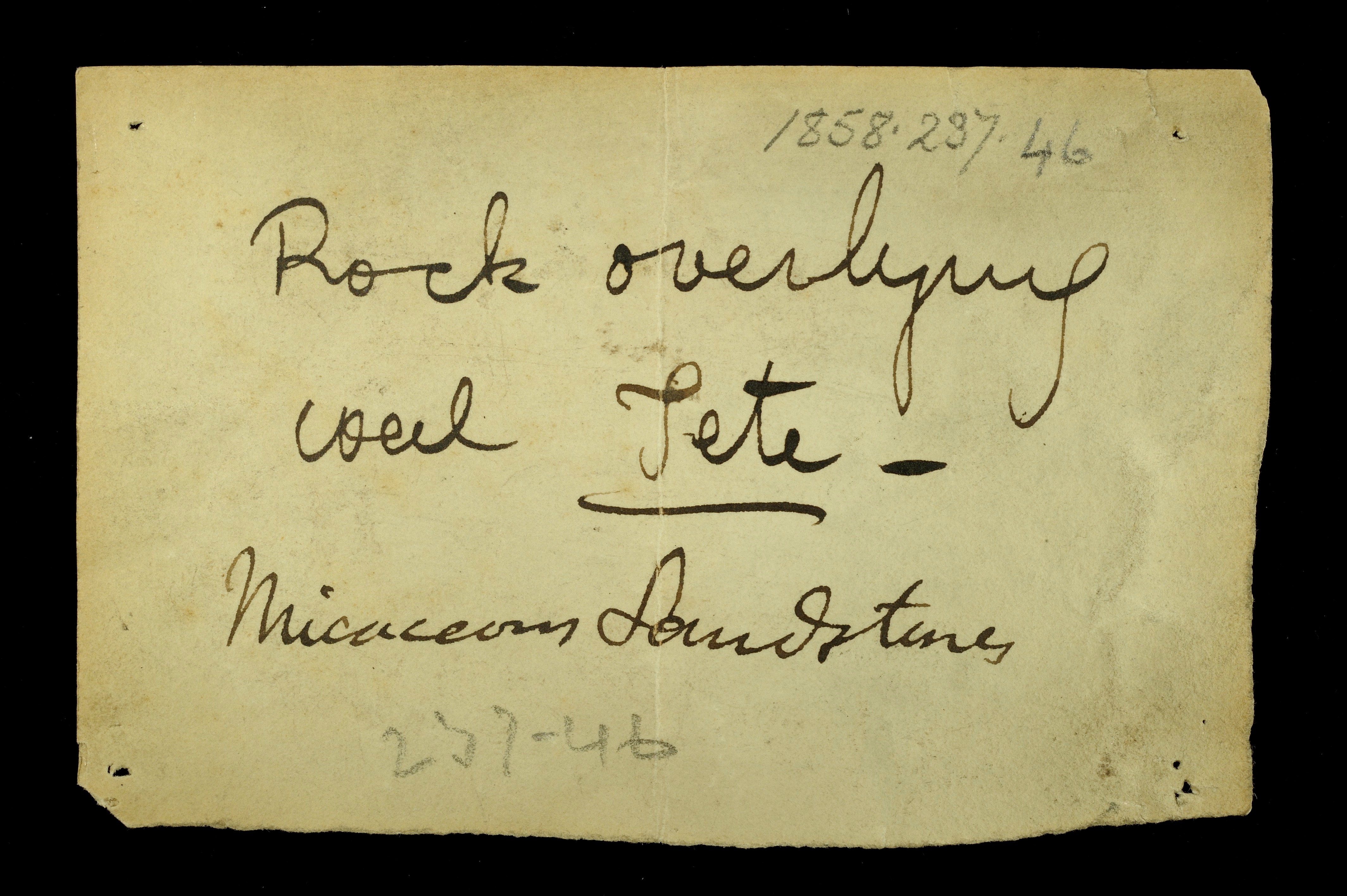
Livingstone’s note written in the field for the micaceous sandstone: ‘Rock overlying coal Tete.’
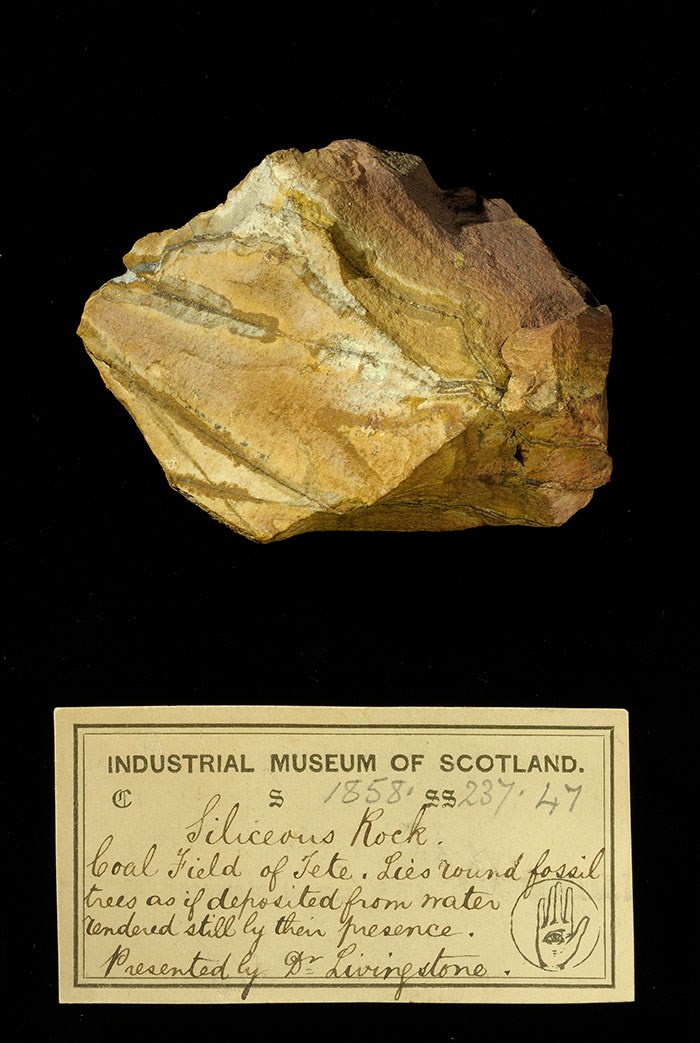
Specimen of siliceous rock with 19th century museum label: ‘Siliceous rock. Coal field of Tete. Lies round fossil trees as if deposited from water rendered still by their presence. Presented by Dr Livingstone.’
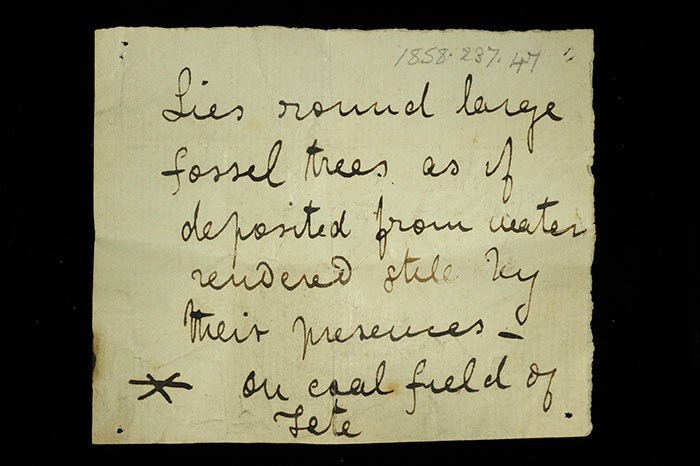
Livingstone’s note written in the field for the siliceous rock: ‘Lies round large fossil tress as if deposited from water rendered still by their presences on coal field of Tete.’ The asterisk indicates relation to the following specimen.
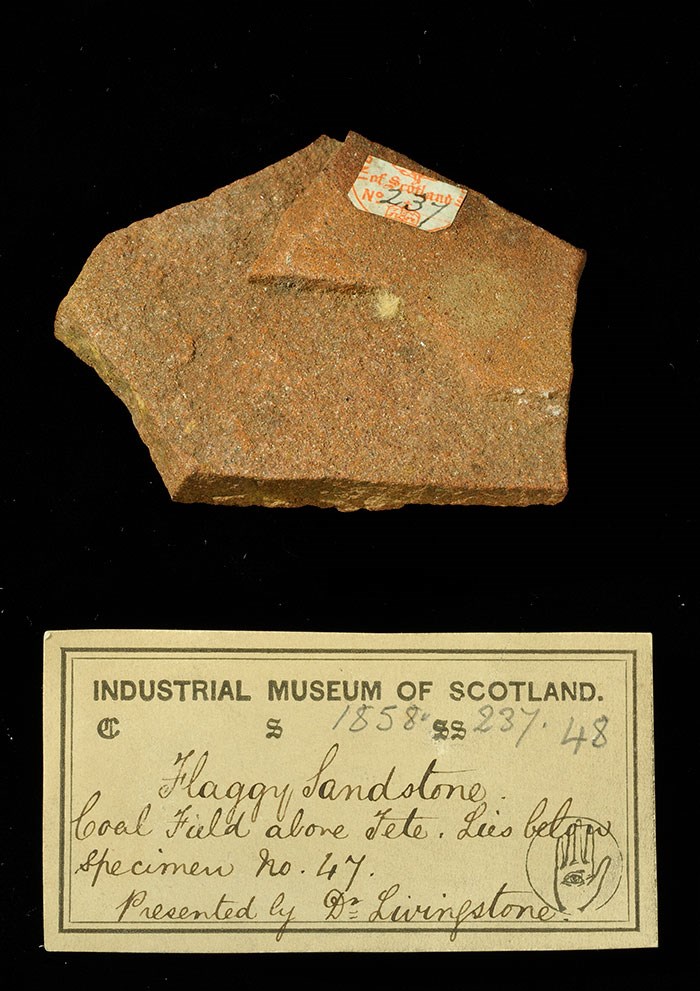
Specimen of flaggy sandstone with 19th century museum label: ‘Flaggy sandstone. Coal field along Tete. Lies below specimen no. 47. Presented by Dr Livingstone.’
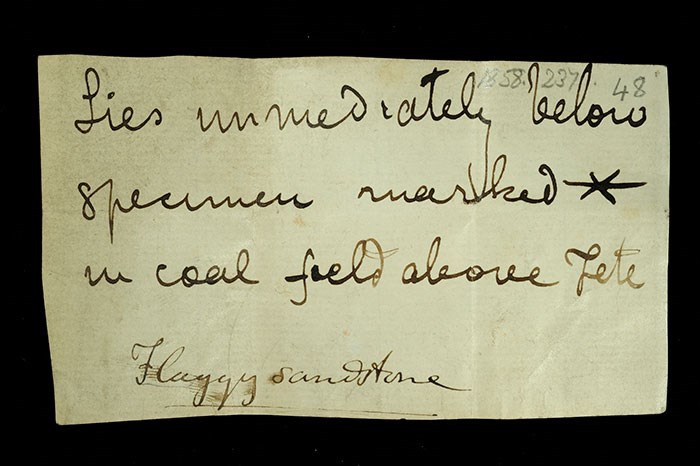
Livingstone’s note written in the field for the flaggy sandstone: ‘Lies immediately below specimen marked * in coal field above Tete.’
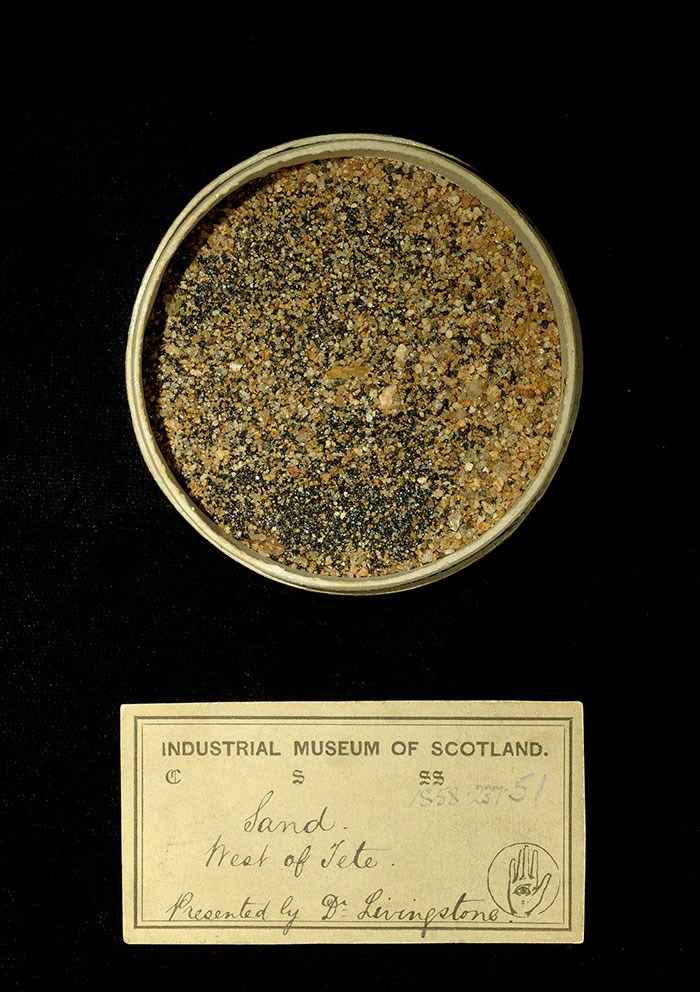
Specimen of sand with 19th century museum label: ‘Sand. West of Tete. Presented by Dr Livingstone.’
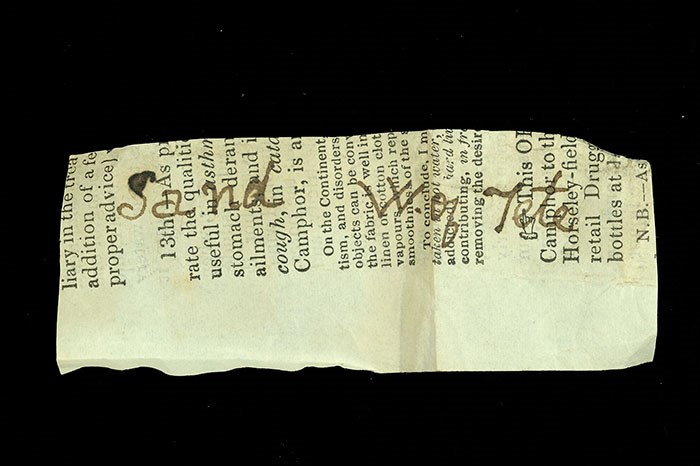
Livingstone’s note written in the field for the sand: ‘Sand W. of Tete.’ This label was written on a torn page of a medical journey.
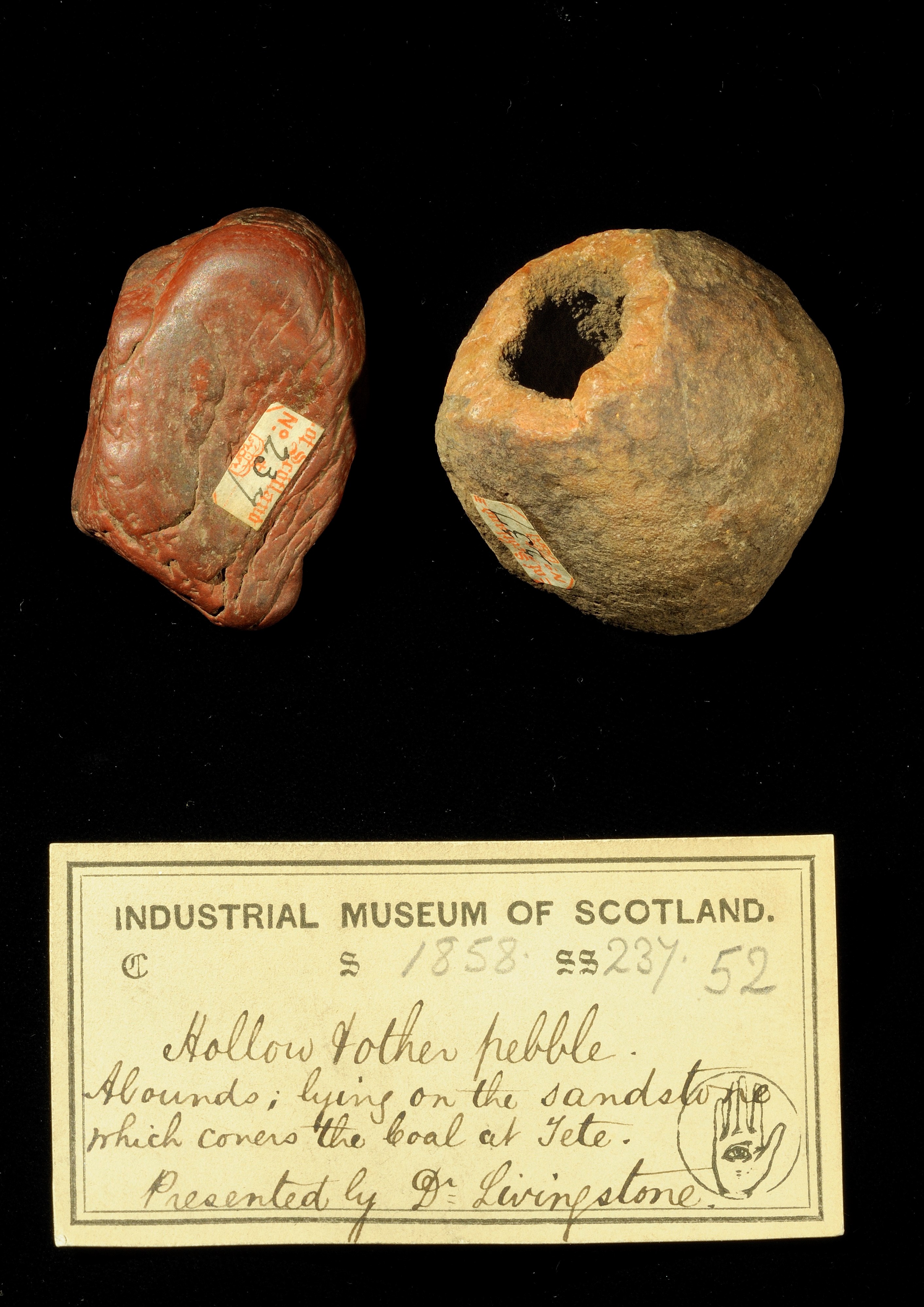
Specimen of a hollowed rock with 19th century museum label: ‘Hollow & other pebble. Abounds lying on the sandstone which covers the coal at Tete. Presented by Dr Livingstone.’
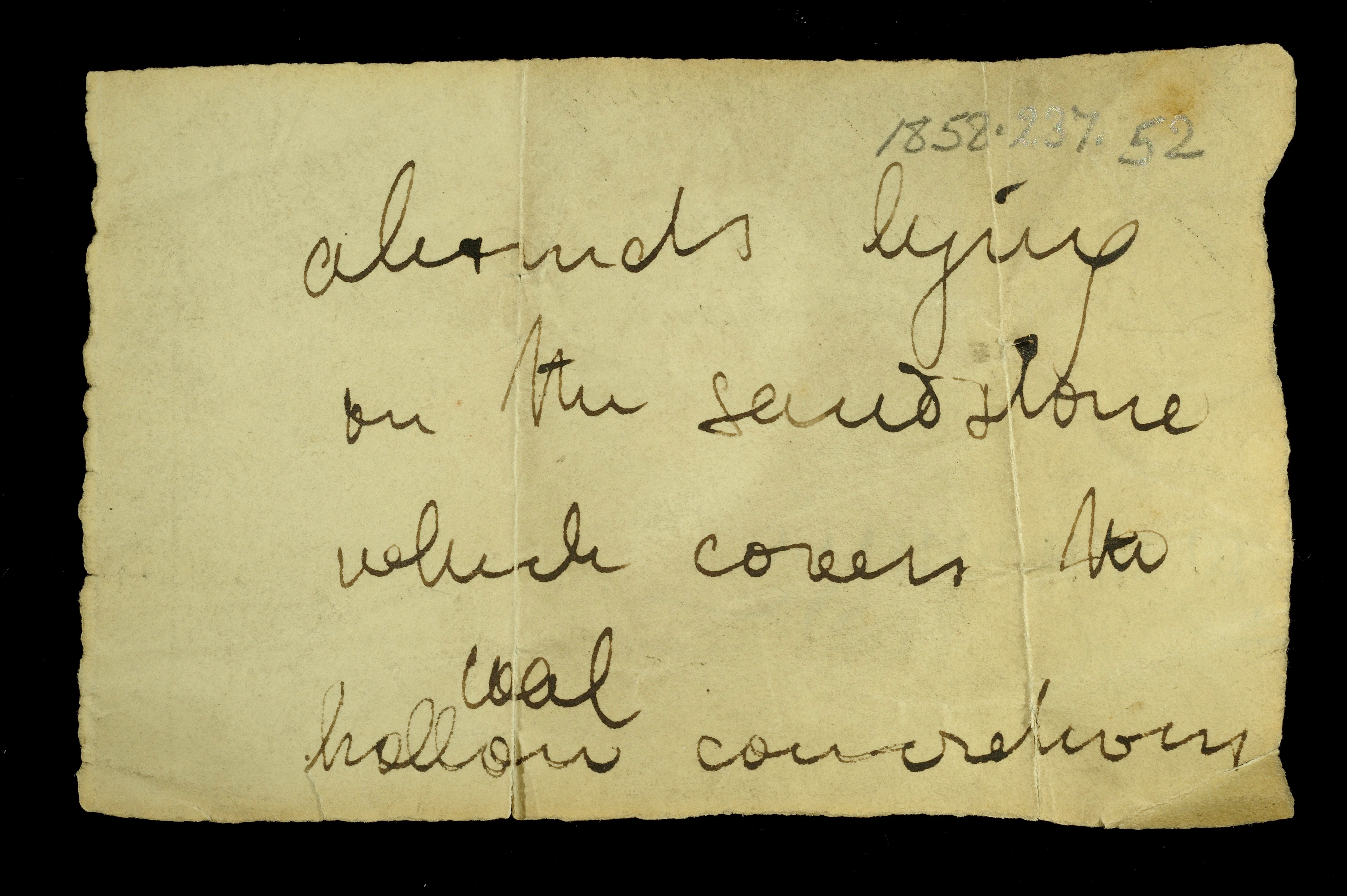
Livingstone’s note written in the field for the hollowed rock: ‘Abounds lying on the sandstone which covers the coal, hollow concretions.’
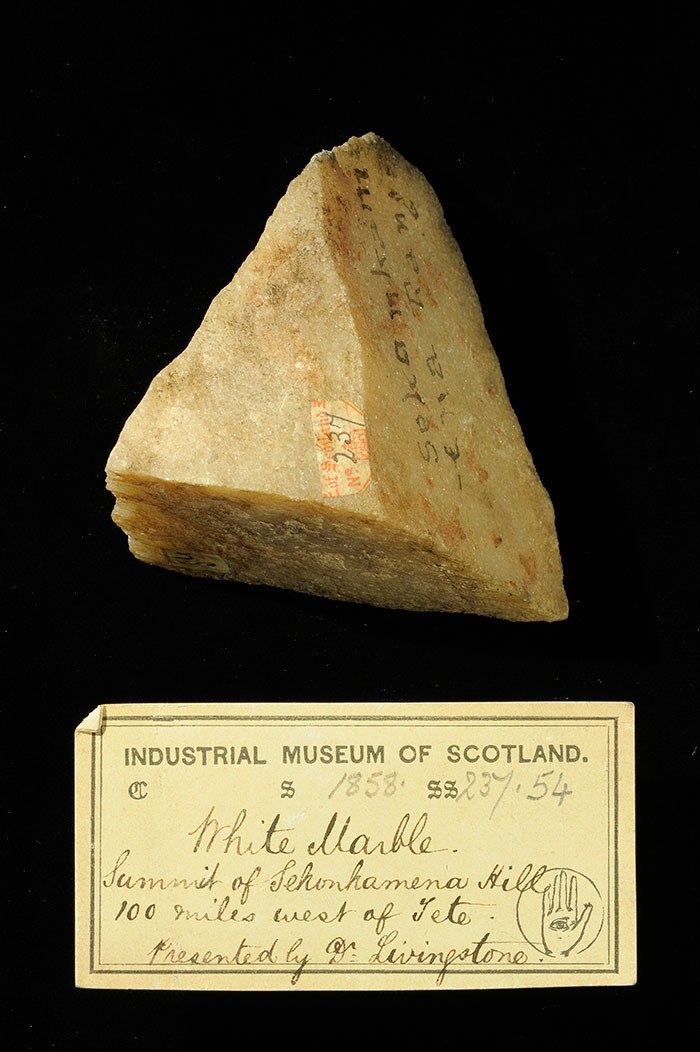
Specimen of white marble with 19th century museum label: ‘White marble. Summit of Sekankamena hill 100 miles west of Tete. Presented by Dr Livingstone.’
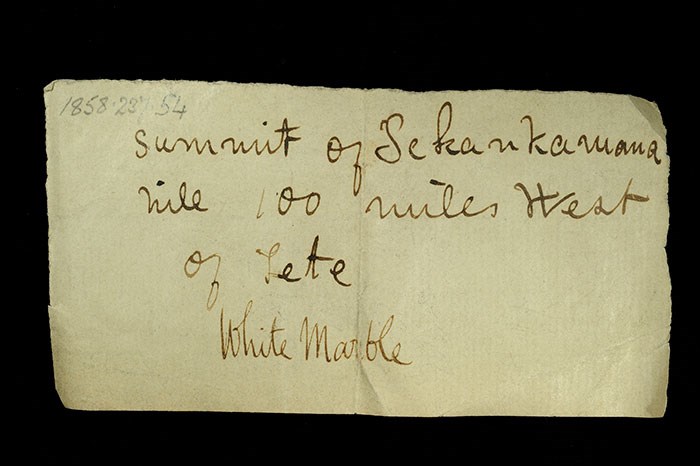
Livingstone’s note written in the field for the white marble: ‘Summit of Sekankamana hill 100 miles west of Tete.’
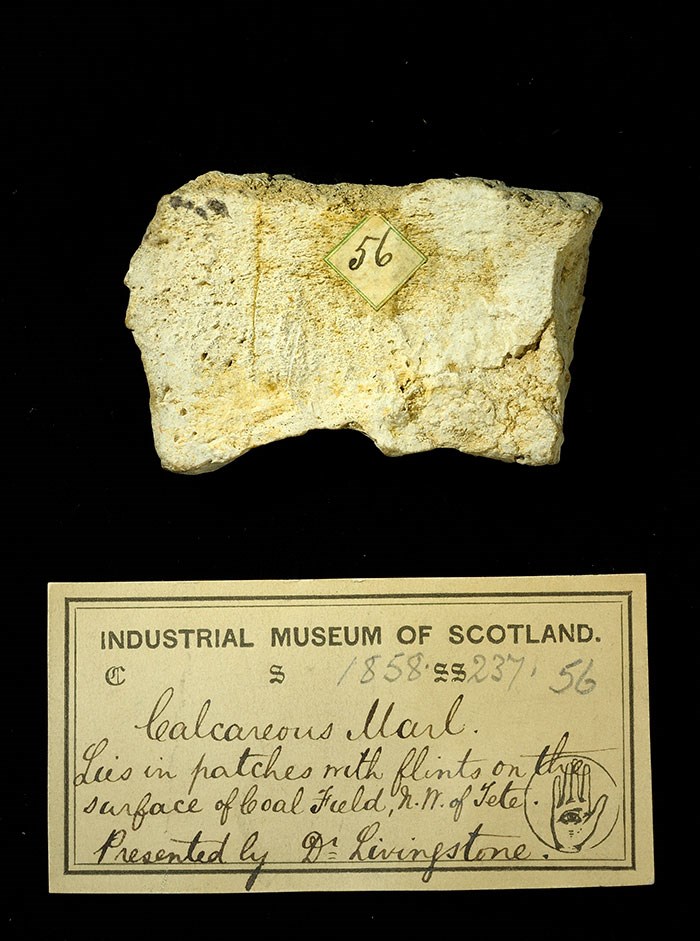
Specimen of calcareous marl with 19th century museum label: ‘Calcareous marl. Lies in patches with flints on the surface of coal field, NW of Tete. Presented by Dr Livingstone.’
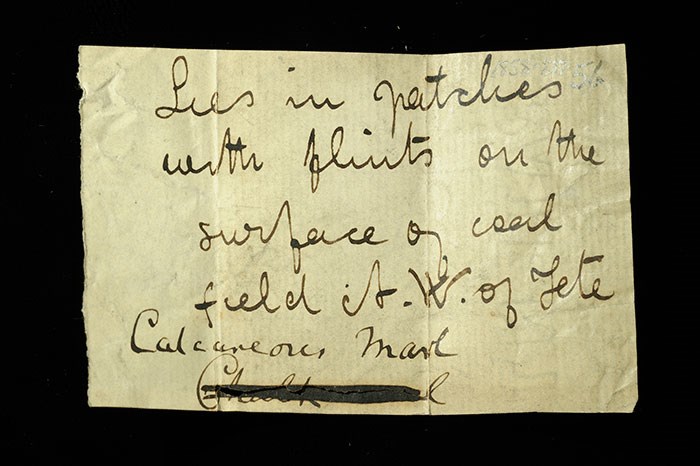
Livingstone’s note written in the field for the calcareous marl: ‘Lies in patches with flints on the surface of coal field NW of Tete.’
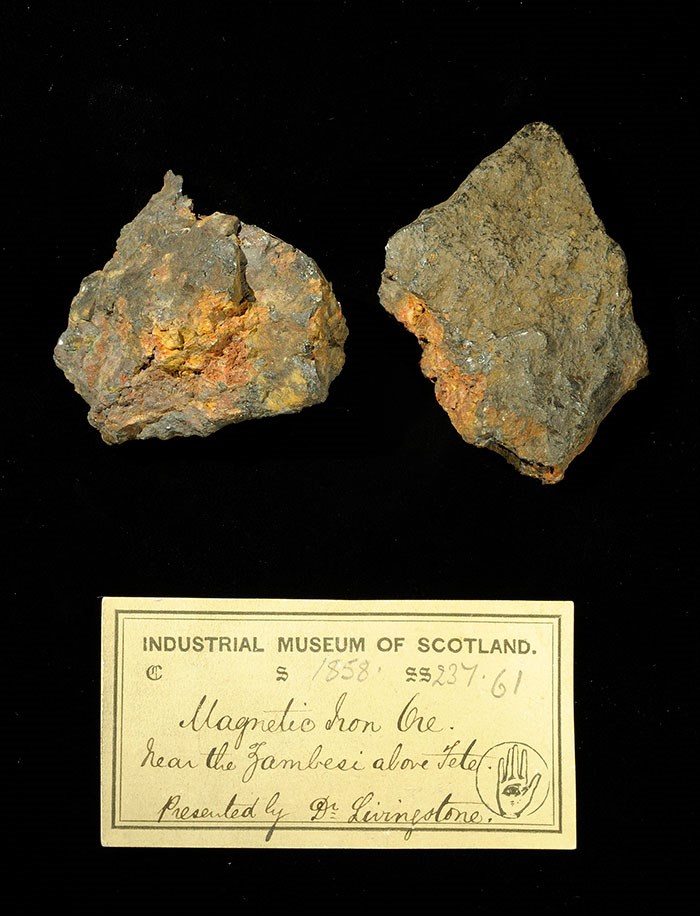
Specimens of iron ore with 19th century museum label: ‘Magnetic iron ore. Near the Zambesi above Tete. Presented by Dr Livingstone.’
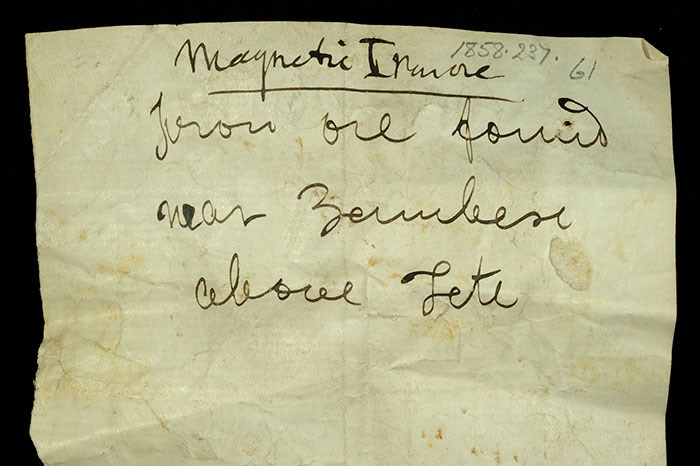
Livingstone’s note written in the field for the iron ore: ‘Iron ore found near Zambesi above Tete.’
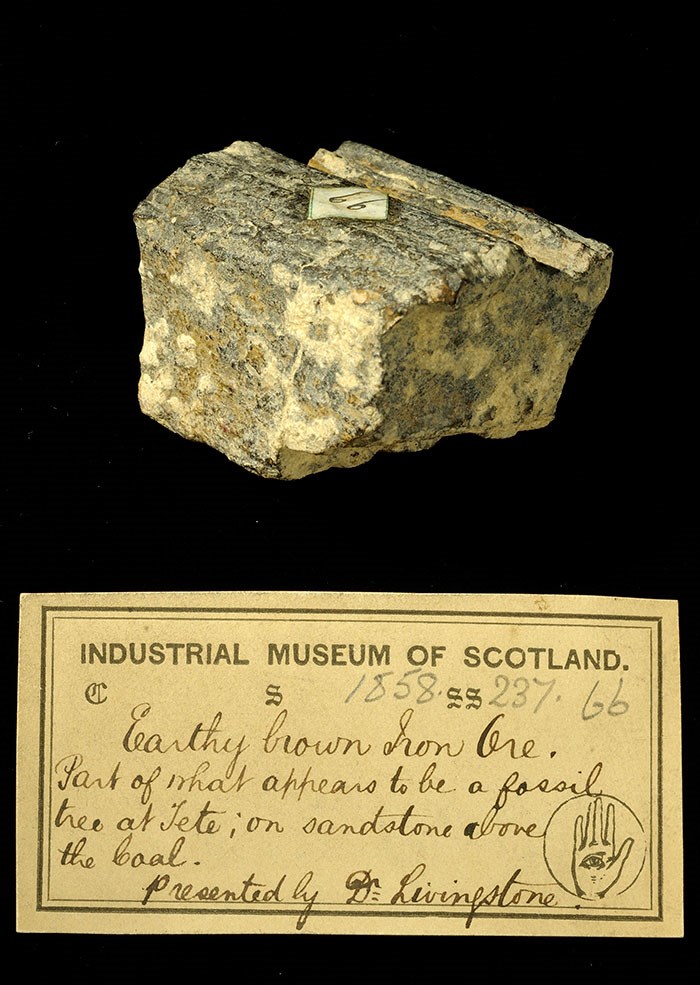
Specimen of iron ore with 19th century museum label: ‘Earthy brown iron ore. Part of what appears to be fossil tree at Tete: in sandstone above the coal. Presented by Dr Livingstone.’
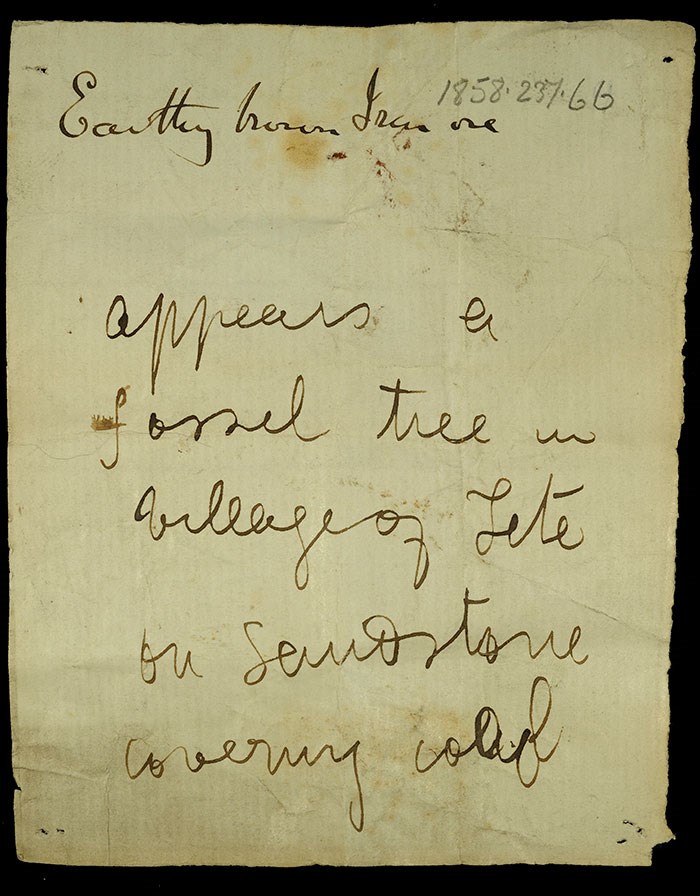
Livingstone’s note written in the field for the iron ore: ‘Appears a fossil tree in village of Tete on sandstone covering coal.’
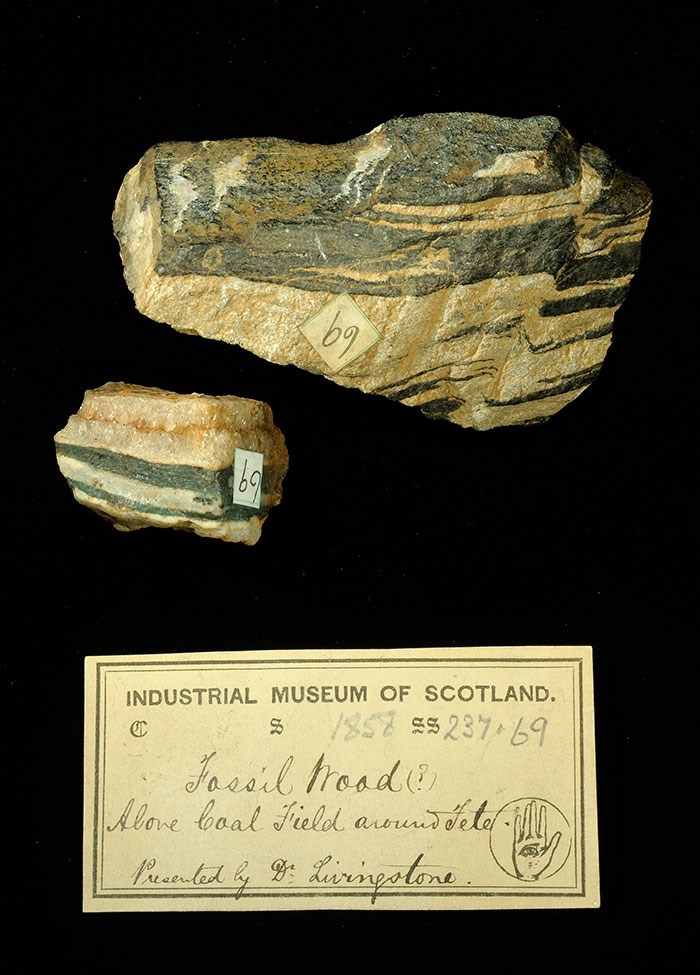
Specimens of fossil wood with 19th century museum label: ‘Fossil Wood (?) above coal field around Tete. Presented by Dr Livingstone.’
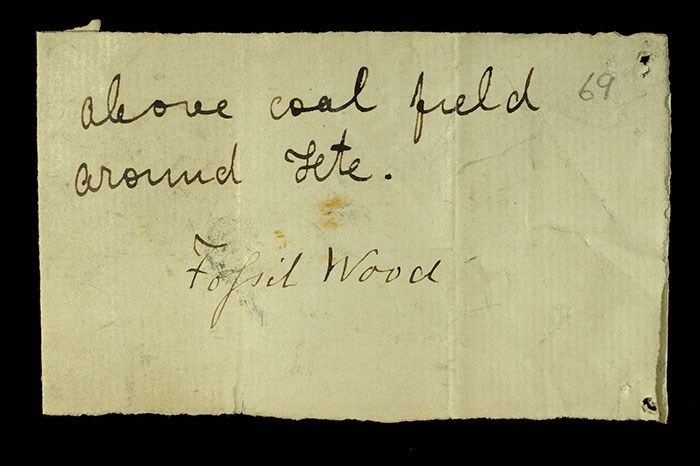
Livingstone’s note written in the field for the fossil wood: ‘Above coal field around Tete.’
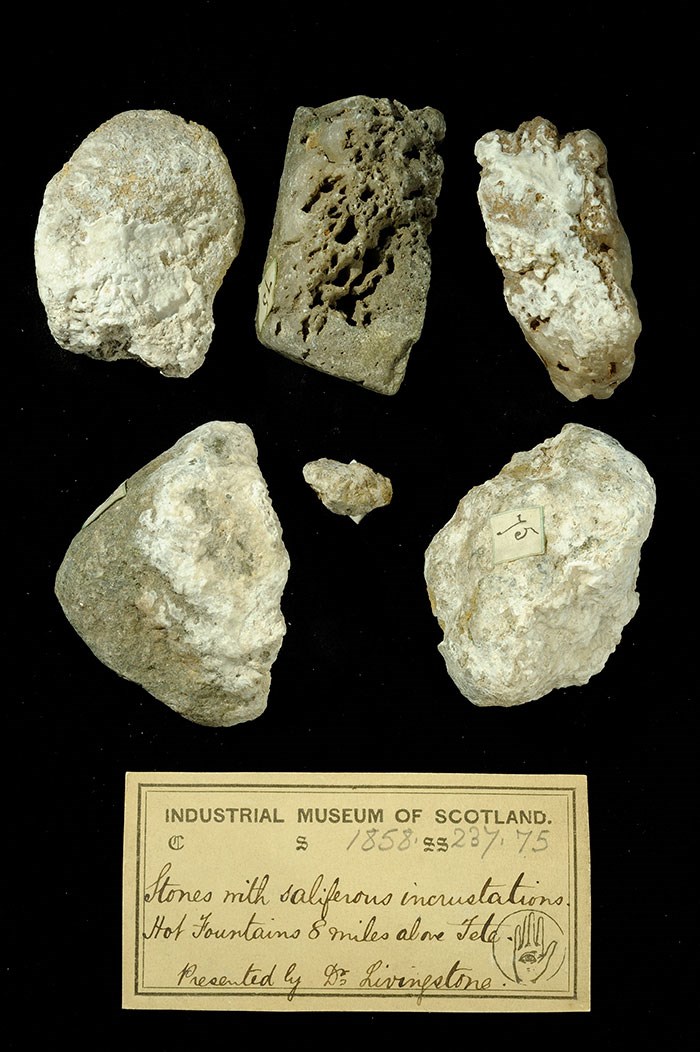
Specimens of rocks with incrustations with 19th century museum label: ‘Stones with saliferous incrustations. Hot fountains 8 miles above Tete. Presented by Dr Livingstone.’
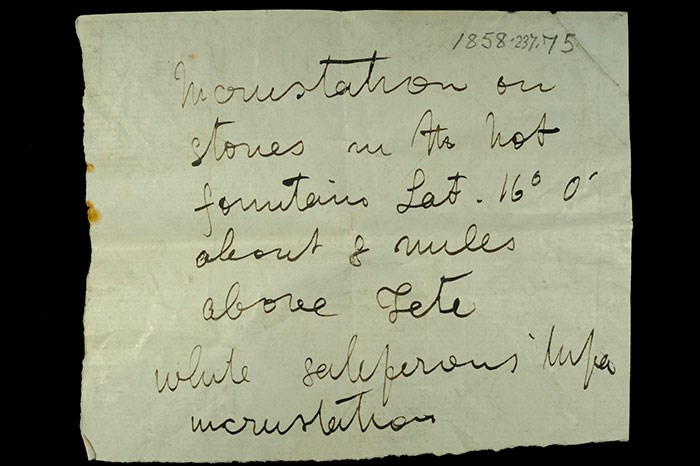
Livingstone’s note written in the field for the rocks with incrustations: ‘Incrustations on stones in the hot fountains, lat. 16° 0’ about 8 miles above Tete white saliferous tufa incrustations.’
